Introduction
There is a very good reason why many torch makers have a quad emitter model utilizing a 21700 Li-Ion battery. This specific configuration offers a great balance of light output, runtime and portability. While it is not the most pocket friendly EDC, it can easily fit in a jacket pocket or a backpack without being too heavy or too bulky and provide higher output and longer run times than a torch that would fit inside your jeans pocket.
Acebeam is filling that spot in its product line with the Acebeam E75, which comes in 4 colours and 2 emitter choices.

The colour choices, in the order that are pictured above, include grey, black, green and teal (which is a colour between green and blue).
The emitter options are either Cool White, which are actually Osram P9 6500K emitters or neutral High CRI emitters, which are Nichia 519A 5000K CRI90.
You can choose any anodization colour combined with each emitter option, so there are 8 combinations overall. For this review, I will be testing both emitter options so you can decide which one works best for you. I went with the black anodization for the Cool White emitters and the teal for the High CRI.
Unboxing
The box that the Acebeam E75 comes in is not a luxurious one. It seems Acebeam opted to save some costs on packaging which is fine by me, as long as it is passed on to the buyer. The front has an outline of the torch shape while the back lists some of the features, common for both emitter options.
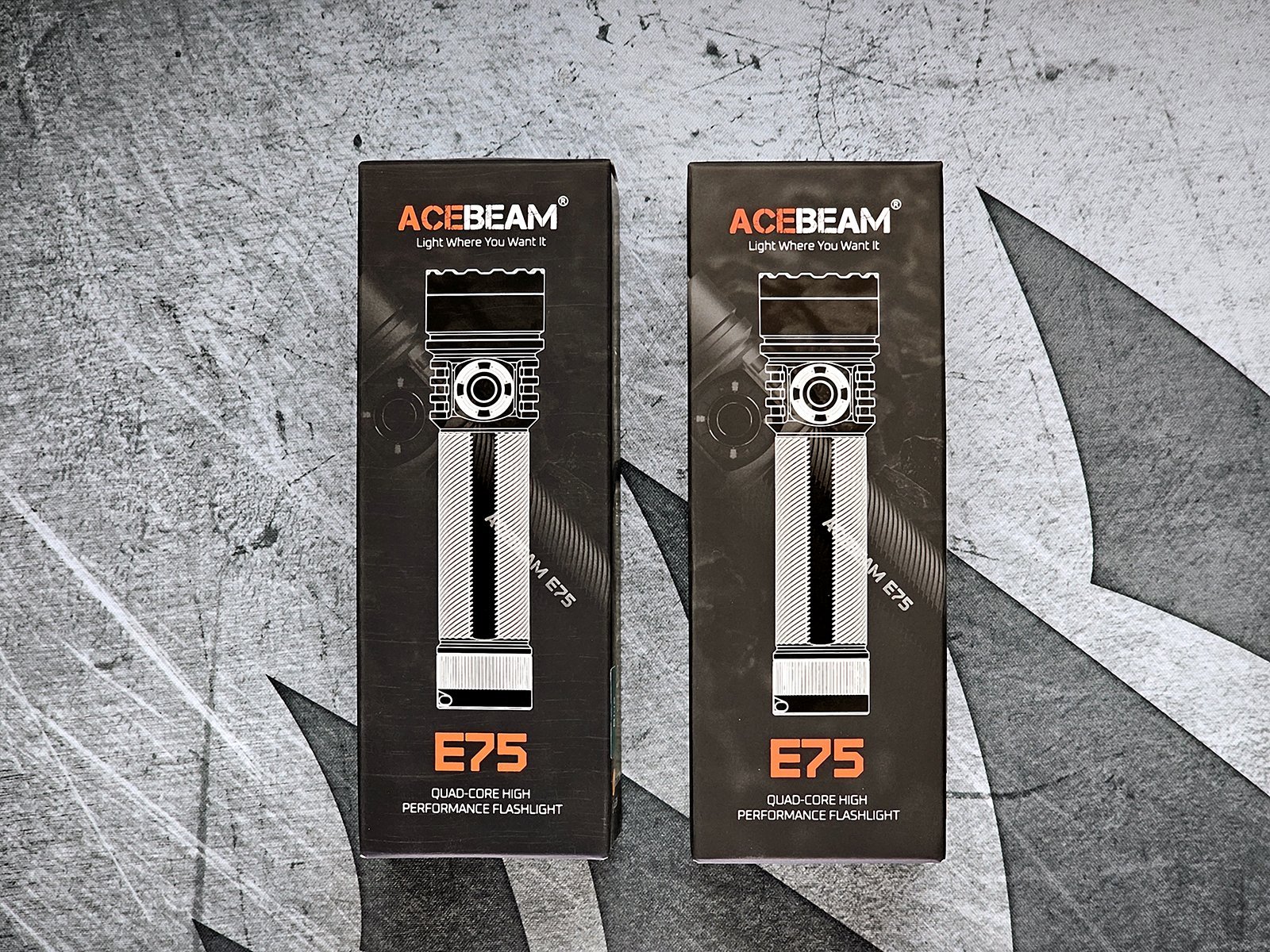
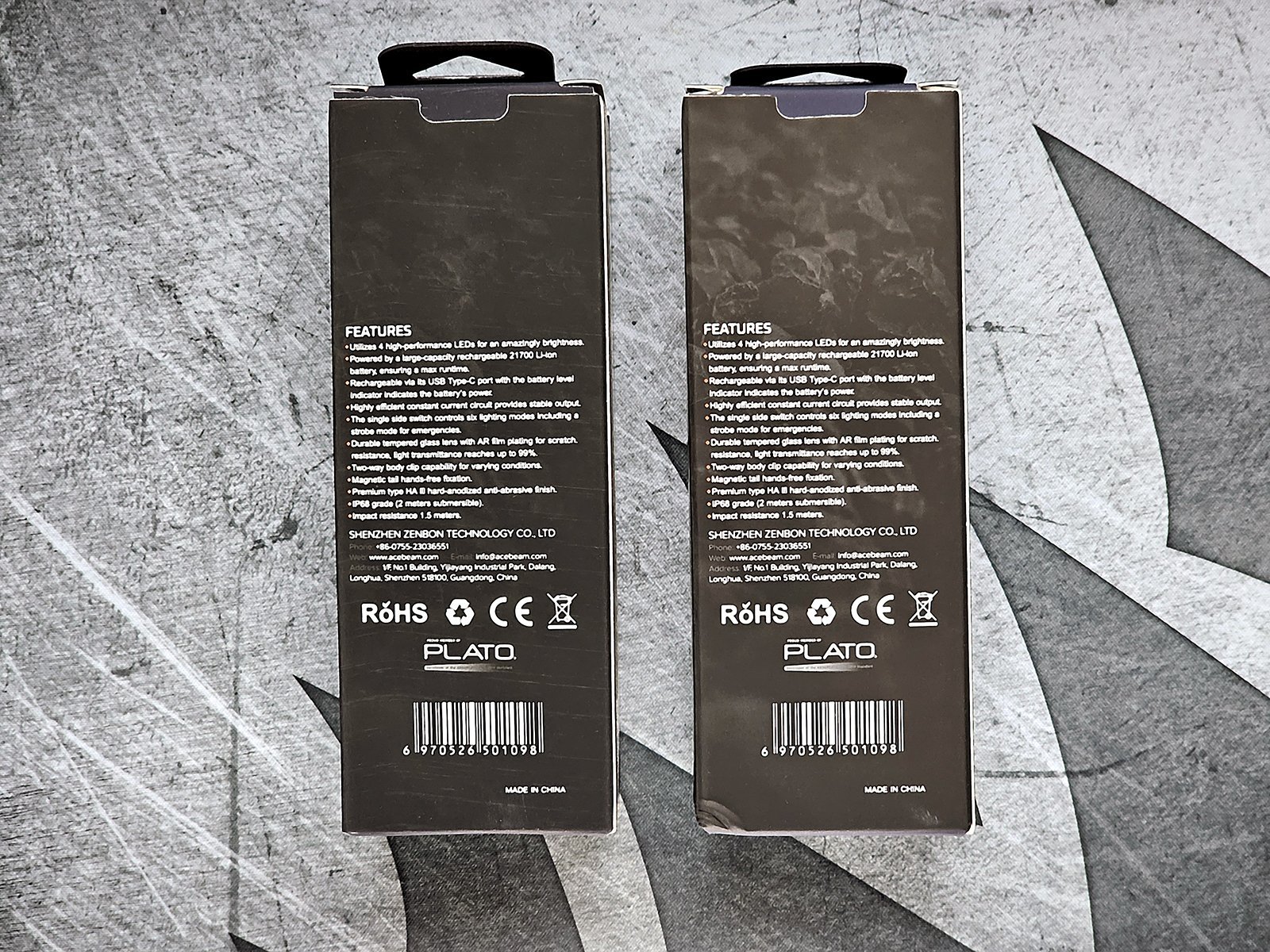
The anodization colour and emitter option are indicated by stickers on one of the sides. Teal is labelled as blue, which can be confusing.
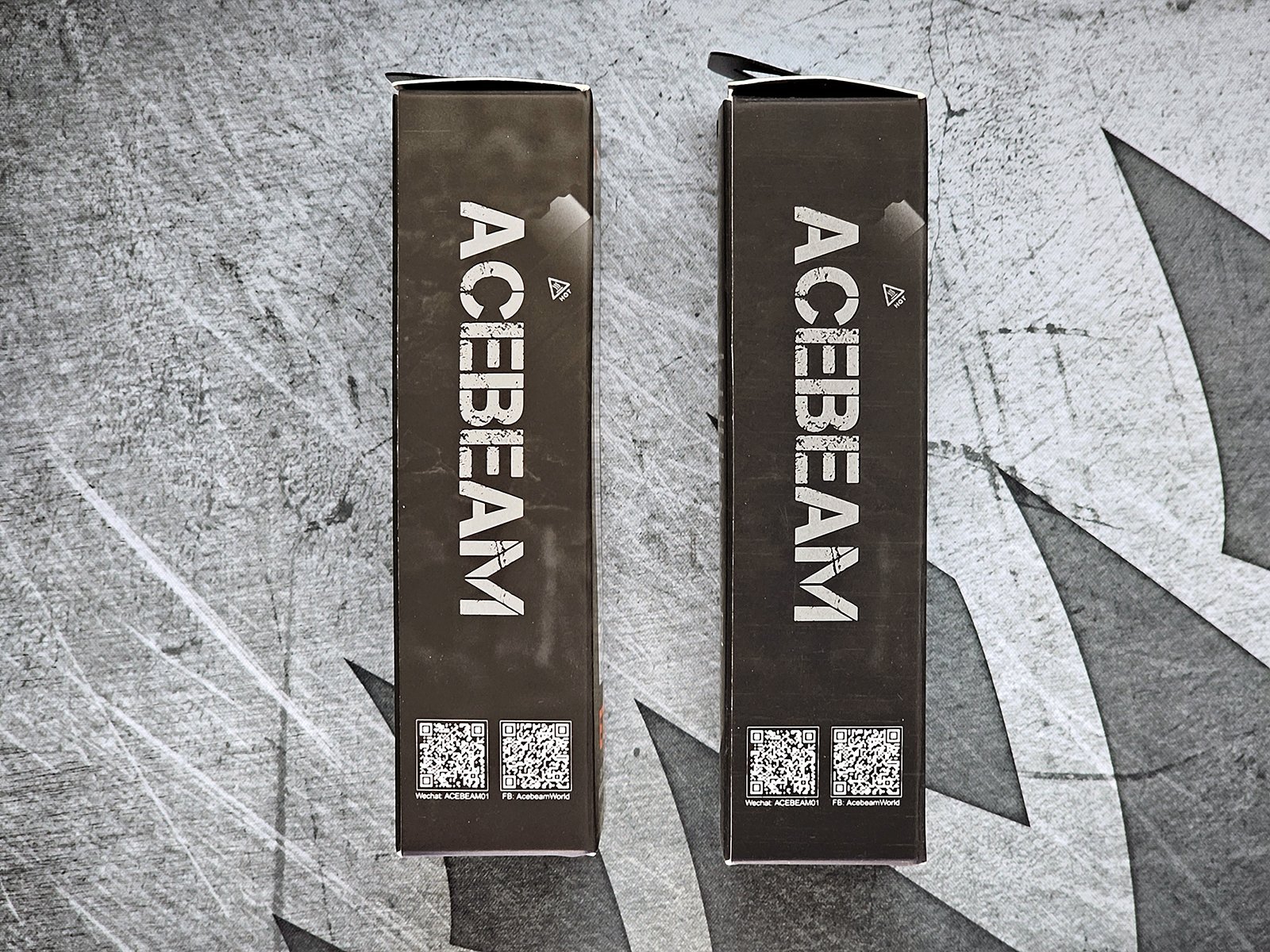
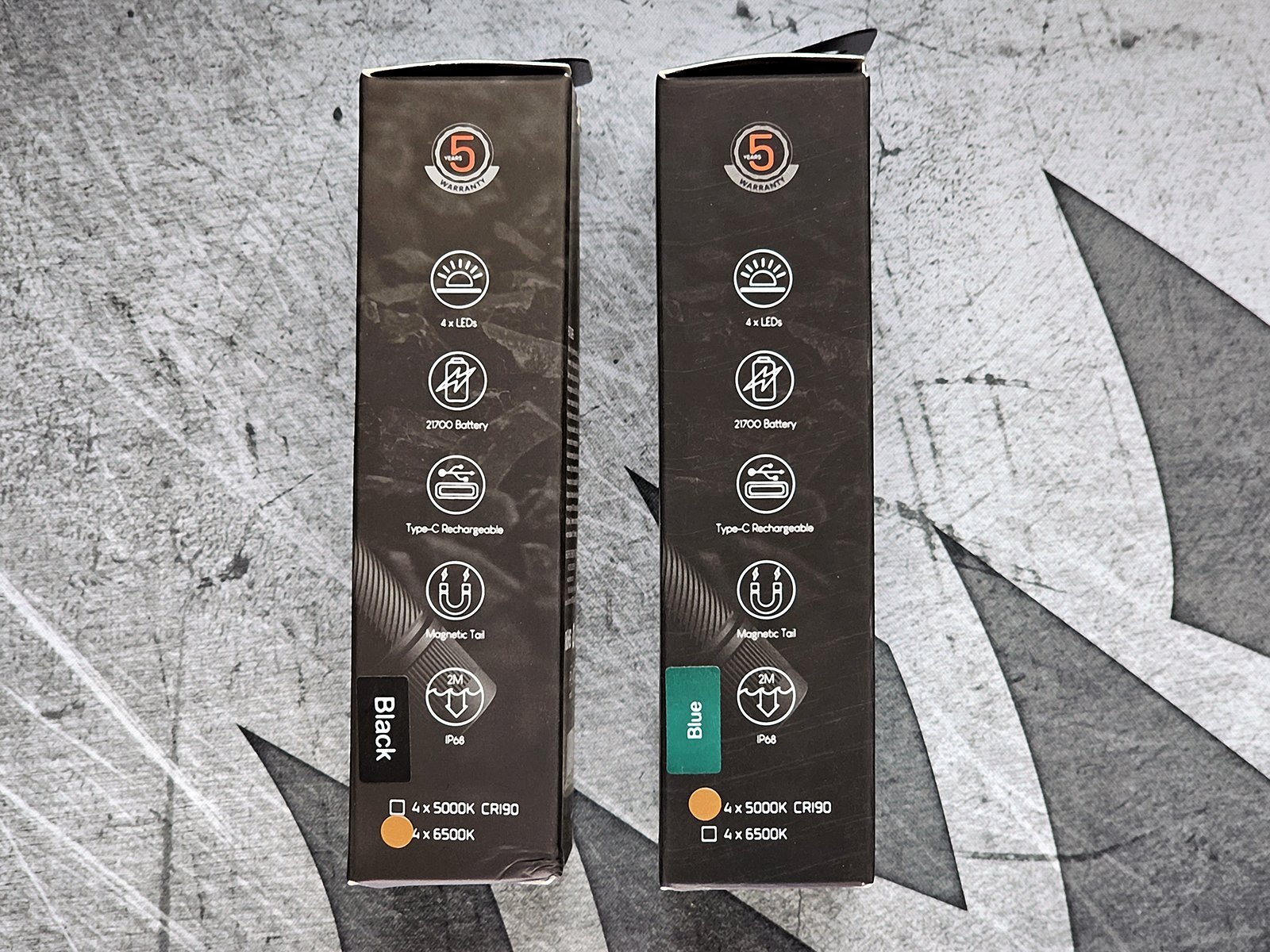
When ordering from Acebeam's website, you can opt to include a white and / or an orange traffic wand. They are high quality and made of silicone so they can be carried without fear of breaking them. They only cost $1.90 each or $3.50 for both so I would get them even if I did not have an immediate use for them. For one thing, they make great diffusers for soft, bedside lighting.
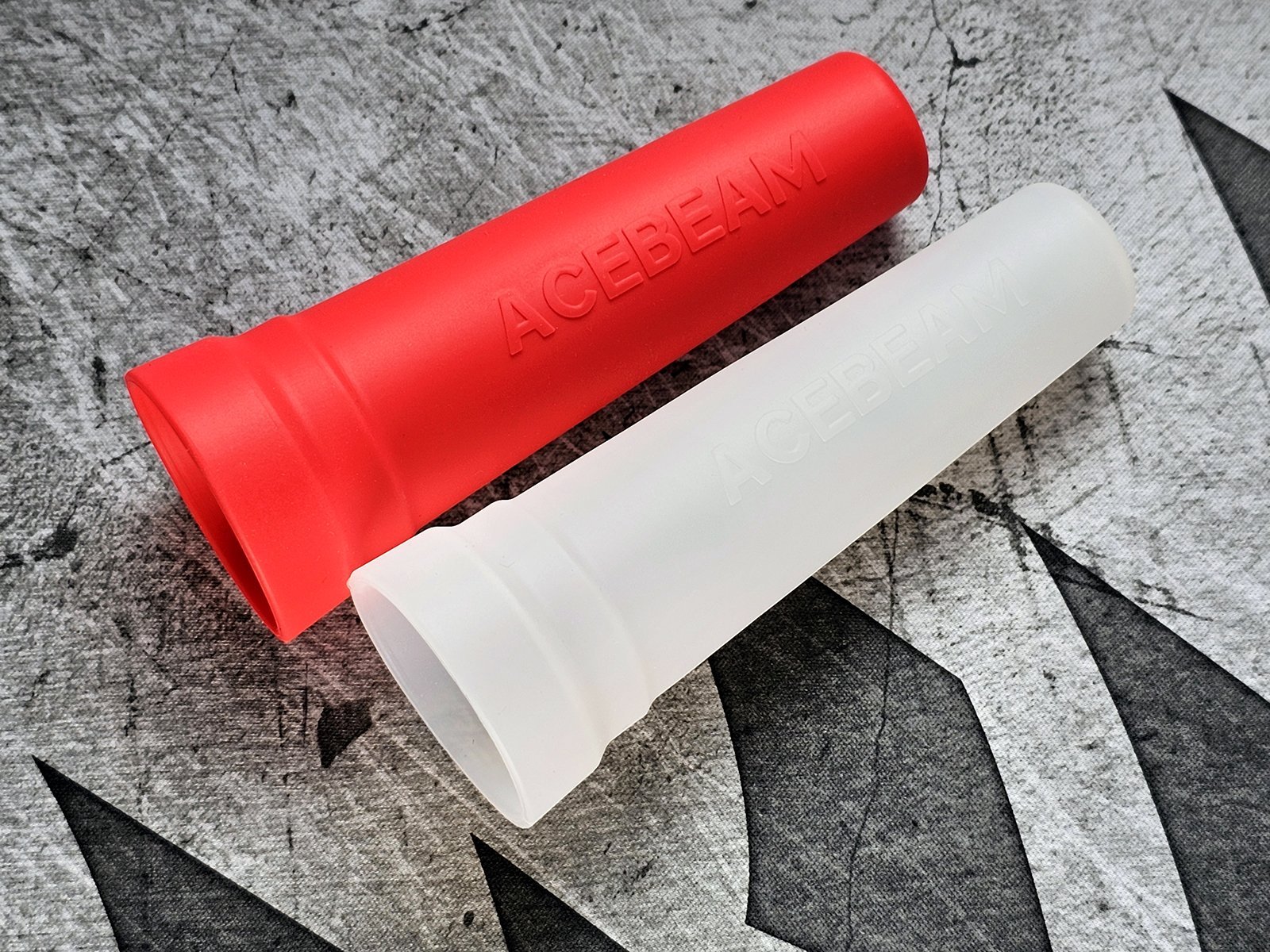
Opening the boxes, we see that the torches come protected in a clear plastic cradle.
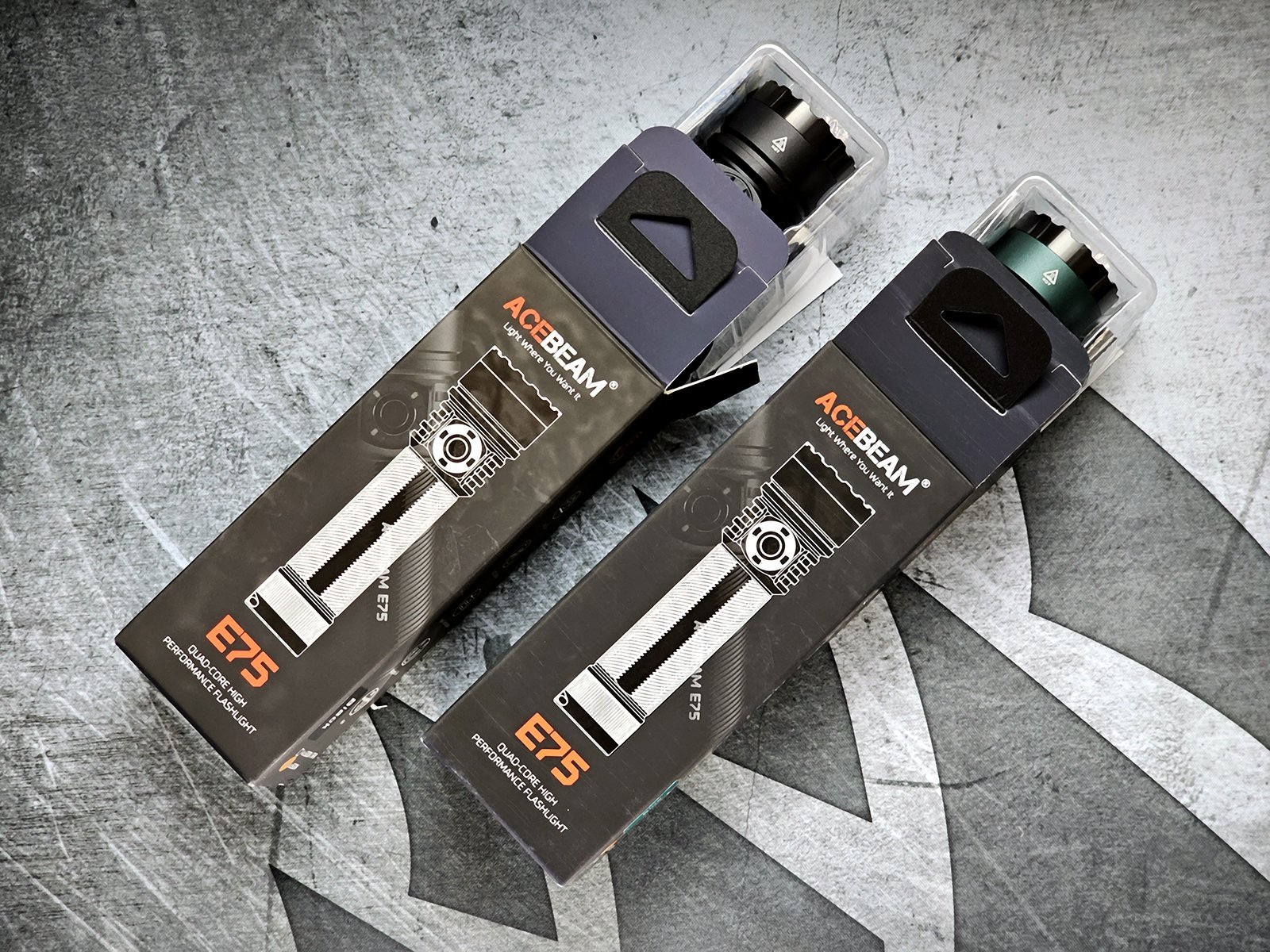
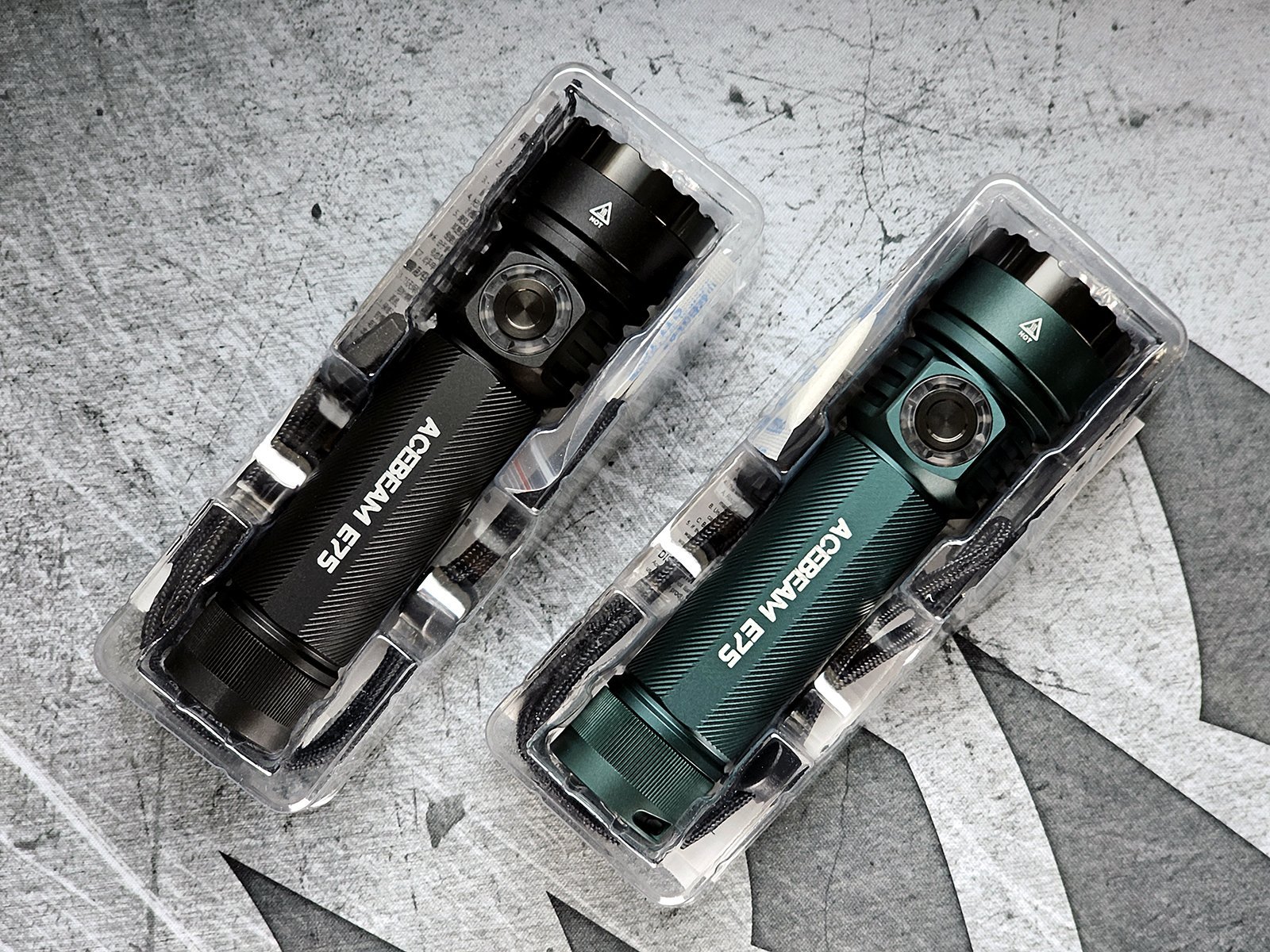
All the accessories are underneath and include a lanyard, a USB A to USB C charging cable, 2 spare o-rings, a spare charging port cover, the user manual and the warranty card.
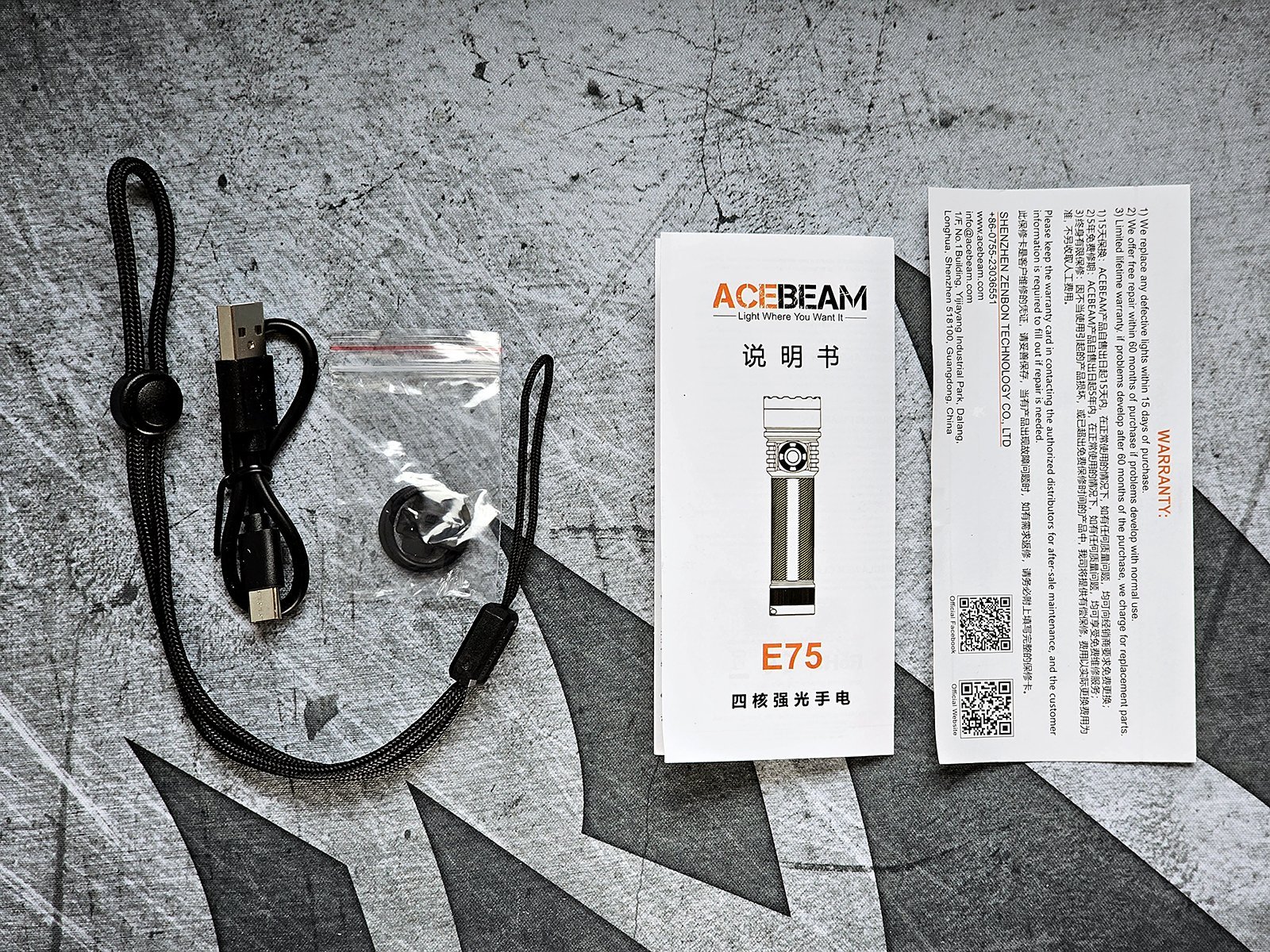
The manual is two sided, one side is in English and the other in Chinese. You can see and read the English side below. The warranty card is also pictured below.
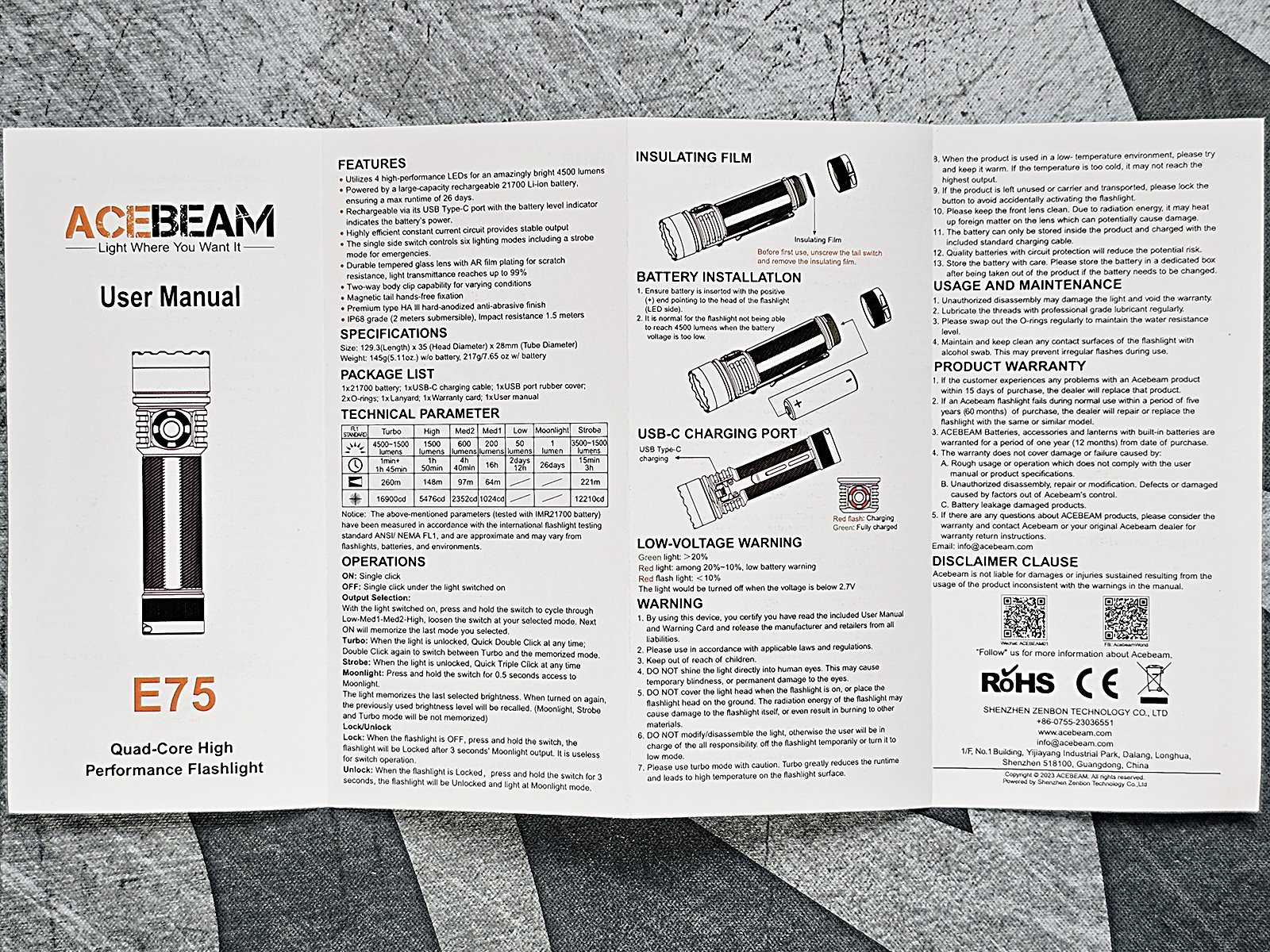
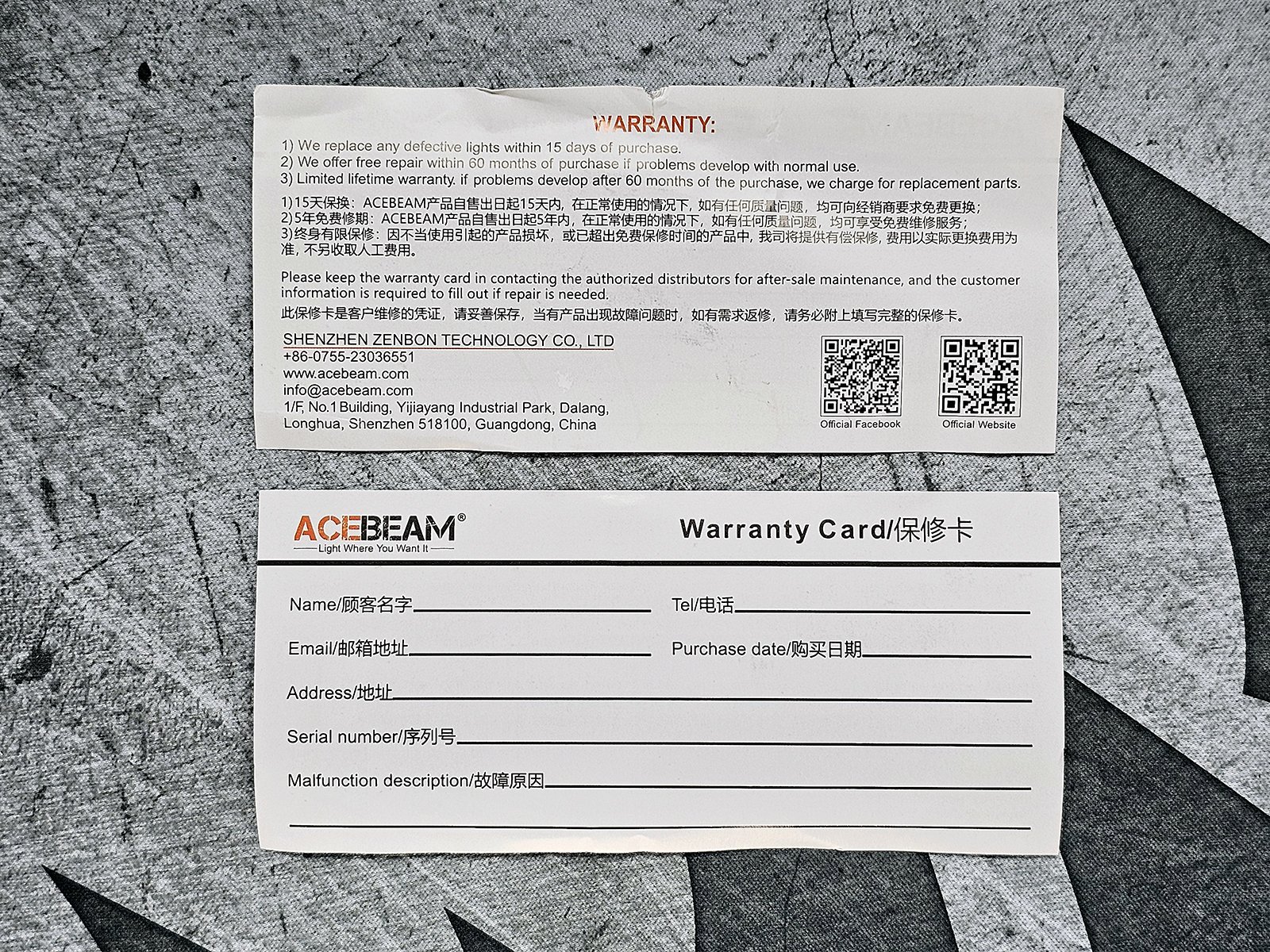
The Acebeam E75 has the typical size and shape of a quad emitter, 21700 torch, with the appropriately sized battery tube and wider head to accommodate the quad emitter configuration.
The machining and anodizing are excellent!
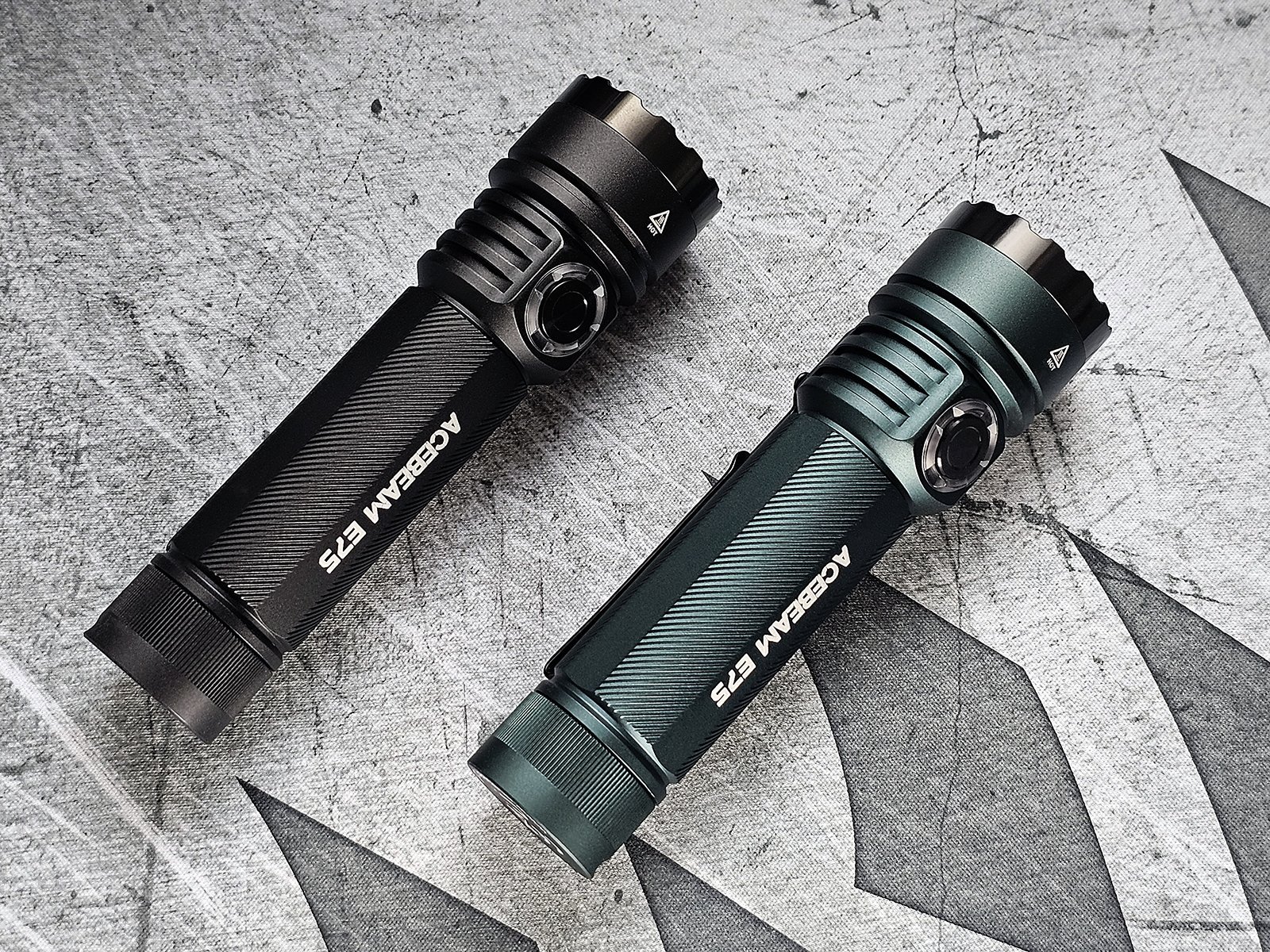
There is a stainless steel crenulated bezel that will allow light to escape if the torch is placed head down on a flat surface and serve to break a car window in need.
The driver section includes the only button, surrounded by a ring of see-through plastic, and some shallow fins to improve heat dissipation and enhance the aesthetics.
The battery tube has 4 flat and 4 diagonally ribbed surfaces, to increase grip. This is not the grippiest surface, but it works well enough and looks nice.
The tail cap also has some thin ribbing to offer a gripping surface when unscrewing it and includes the lanyard hole.


Here is the metal button, surrounded by the see-through plastic.
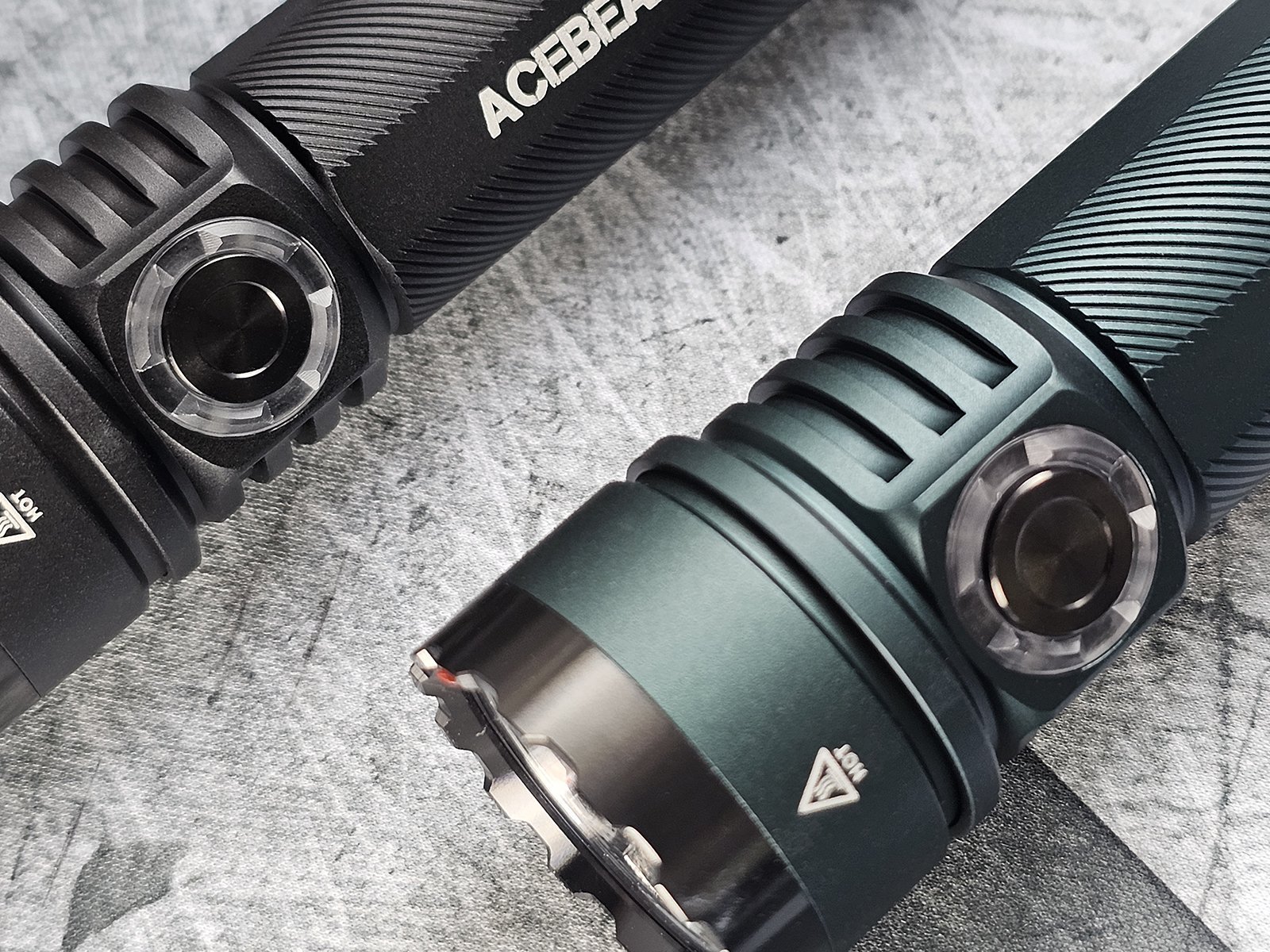
On the exact opposite side of the button, we find the rubber flap which covers the charging port and the clip.
The clip is held in place with 2 screws, is double sided and not deep carry.

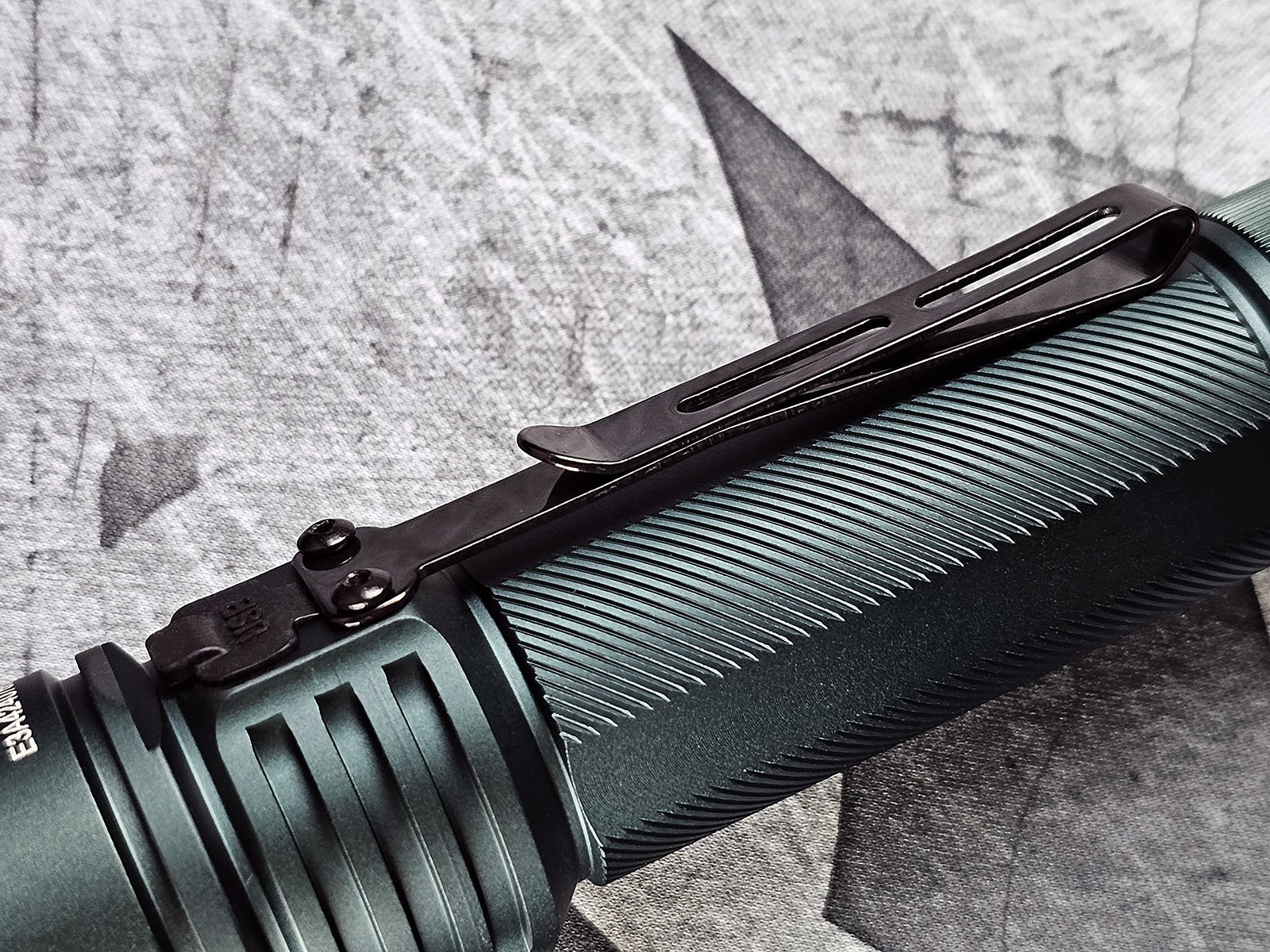
The flap is easy to open thanks to a little tab that you can grip with your finger nails at the front. It fits very nicely in the recess of the charging port, offering what seems like a tight seal.
The recess of the charging port is wide enough to accommodate all USB C plugs that I have (which are a lot), which is not always the case, so that's nice.
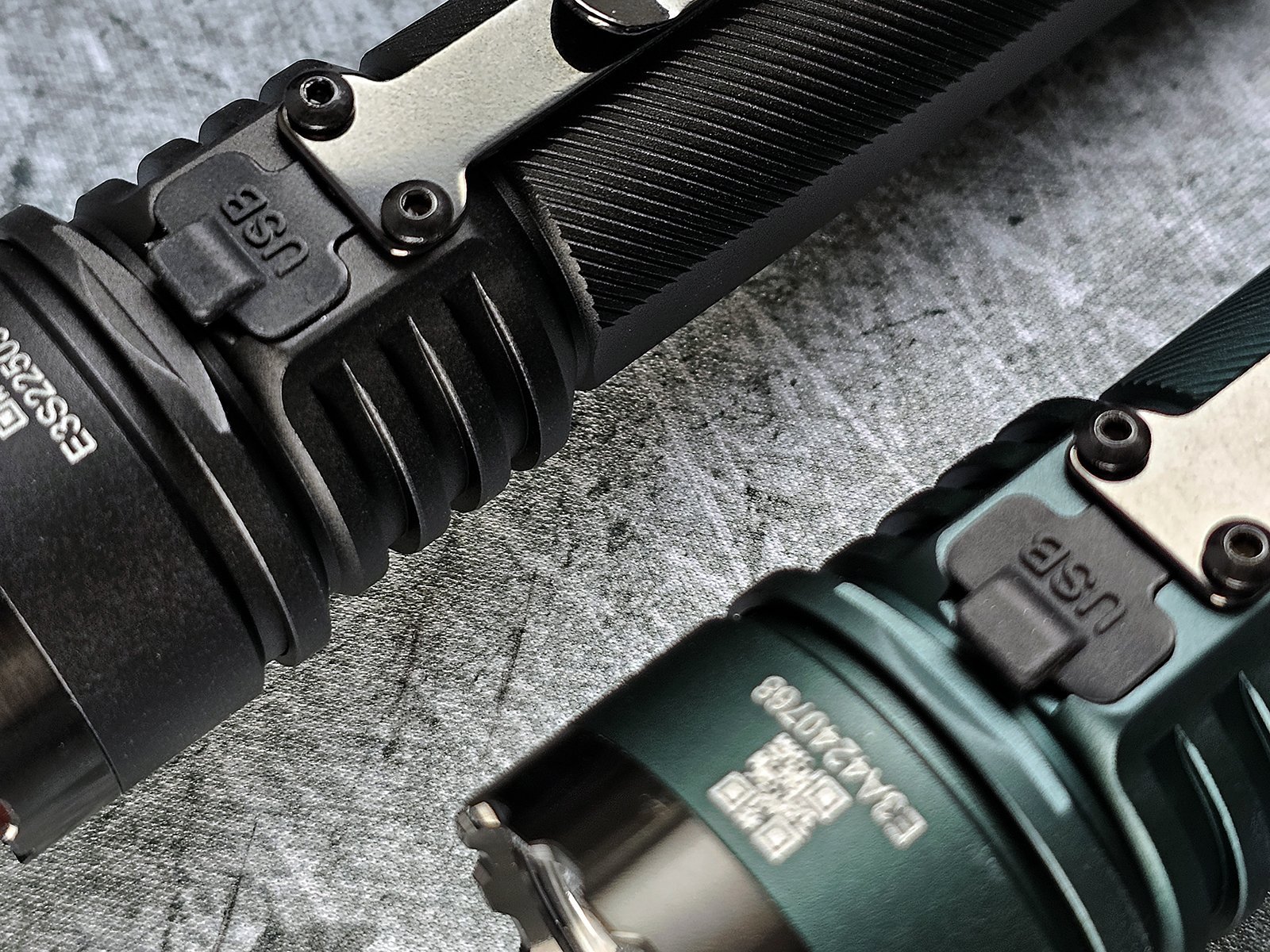
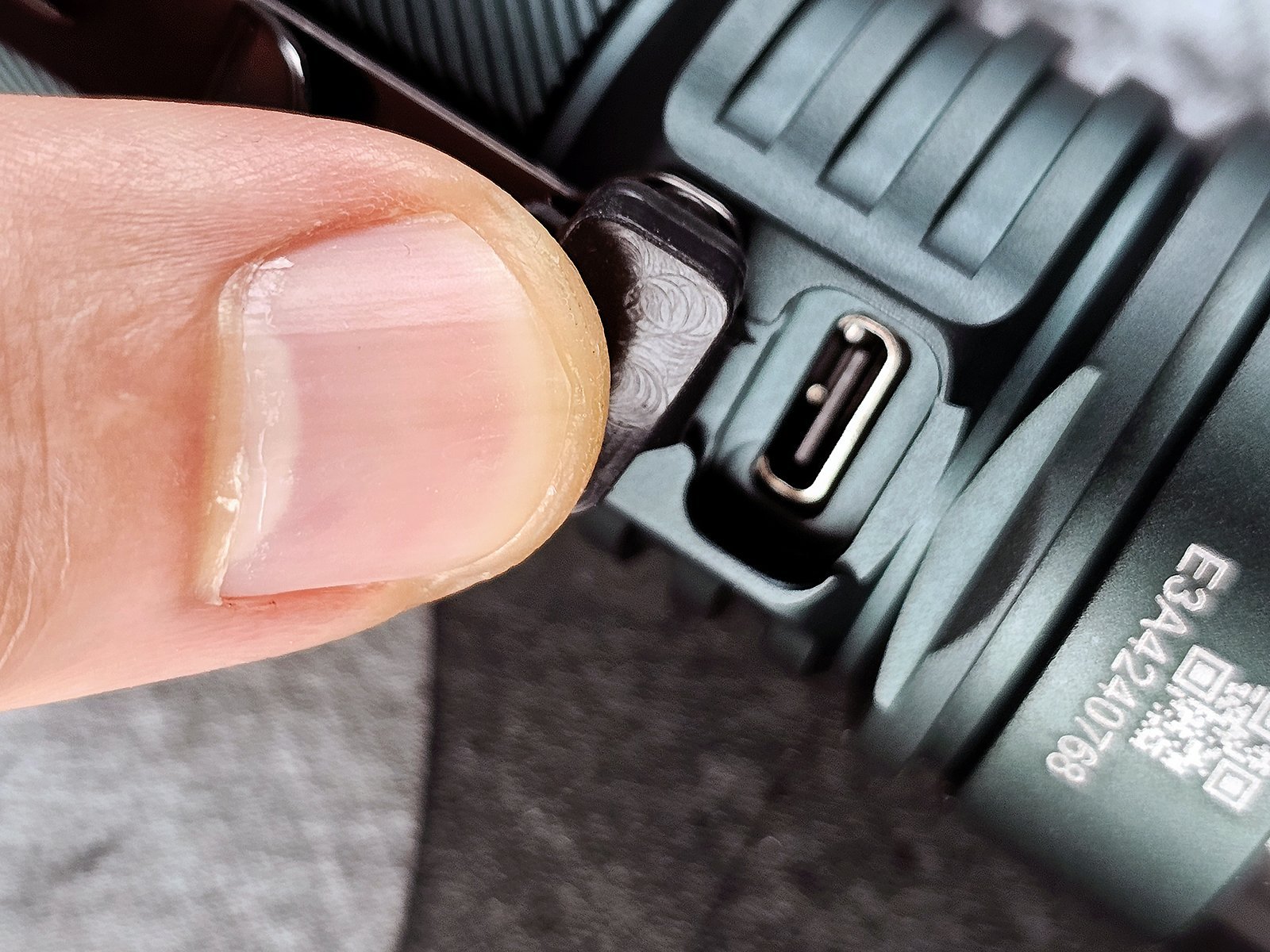
On the business end of the torch, we peel the protective film to find that Acebeam did not go the usual route of a TIR optic but chose instead a quad reflector and glass lens. This is a more expensive but also more robust configuration as there is no plastic to melt if the front of the torch gets dirty and is definitely more scratch resistant.
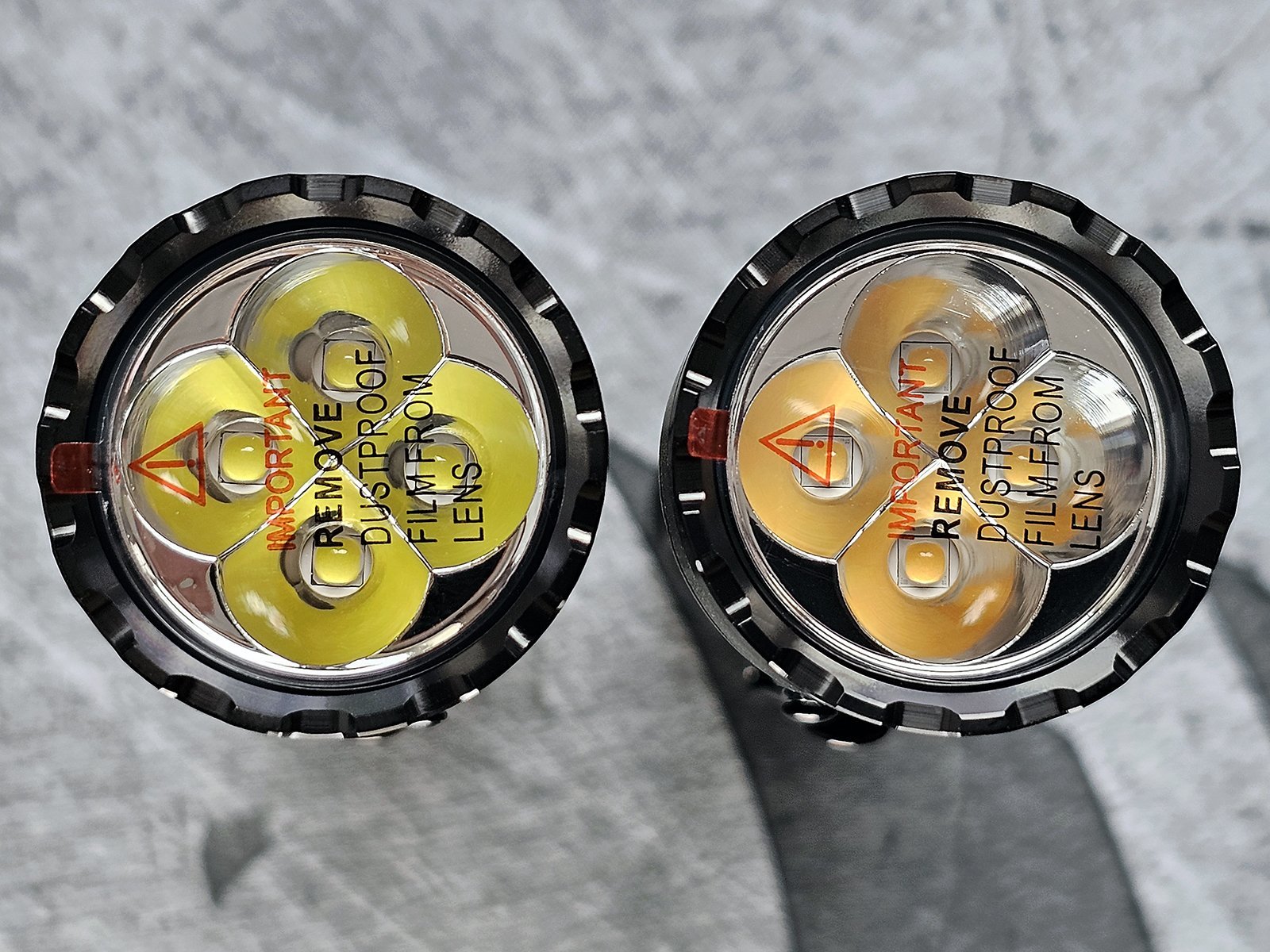
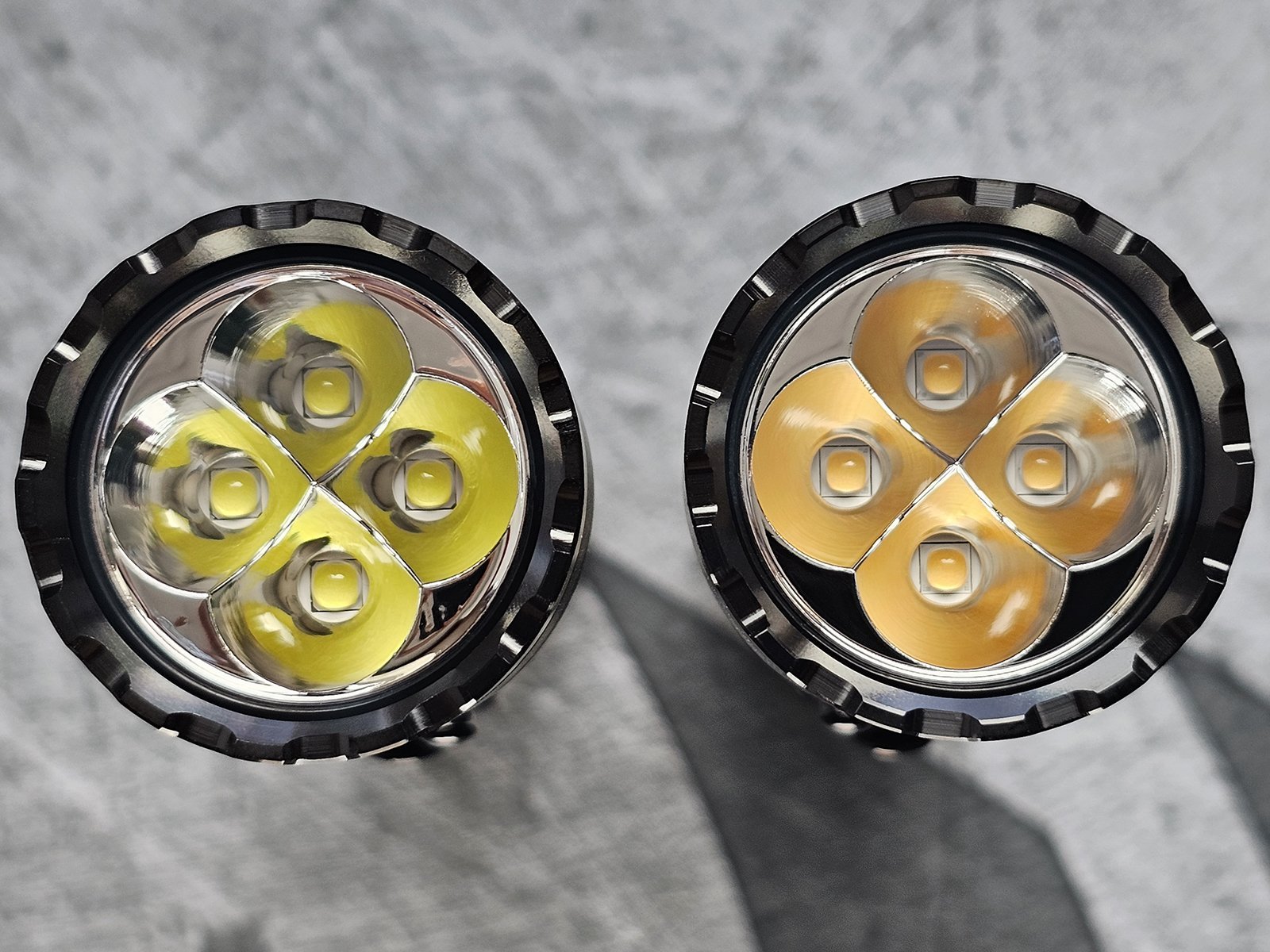
The quad reflector is smooth so it is expected to offer some throw along with the inherent flood of a quad configuration. On the first photo we see the Osram P9 6500K Cool White emitters and on the second the Nichia 519a 5000K CRI90 emitters. Both emitter types are 3.5x3.5mm.
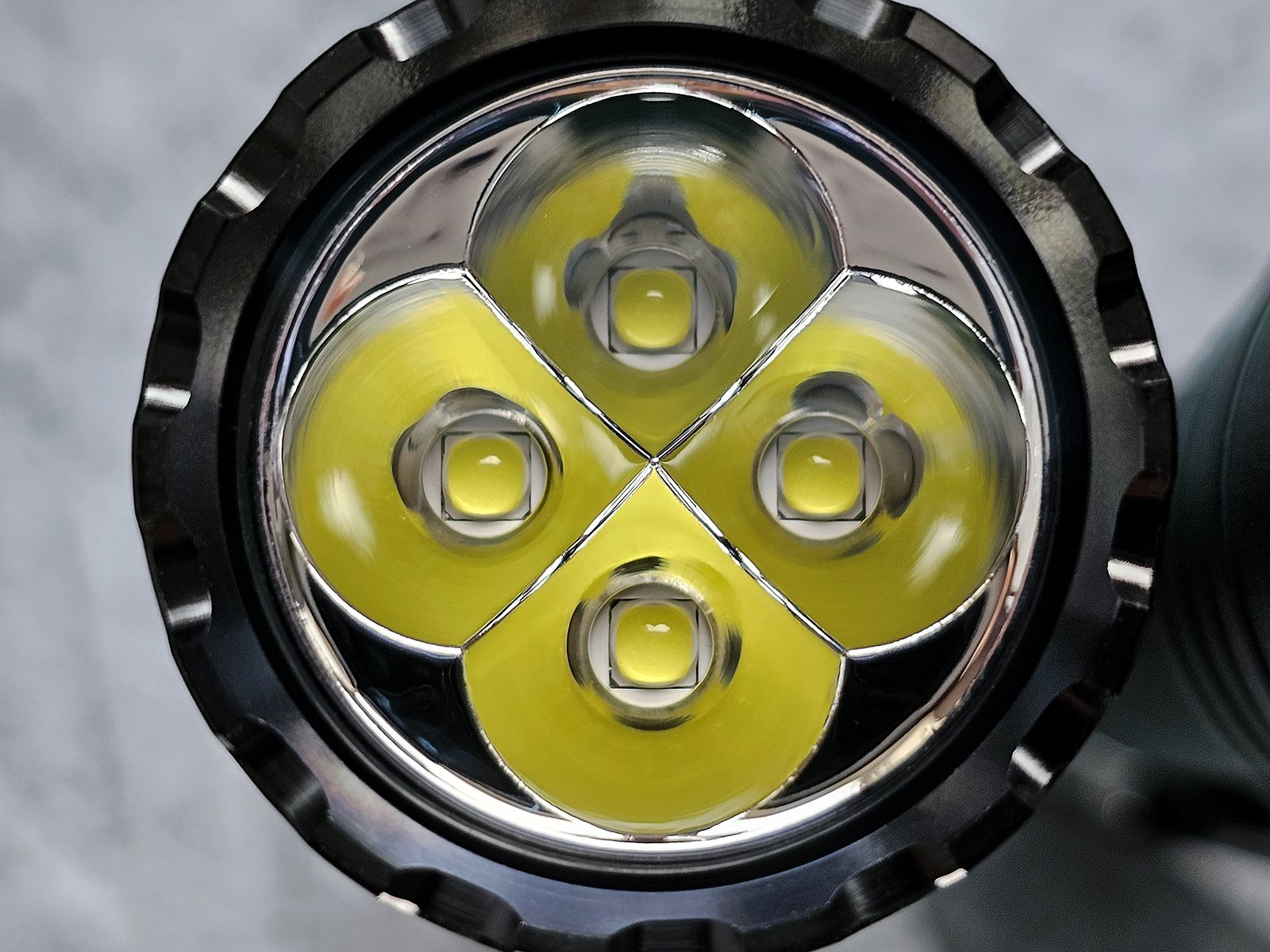
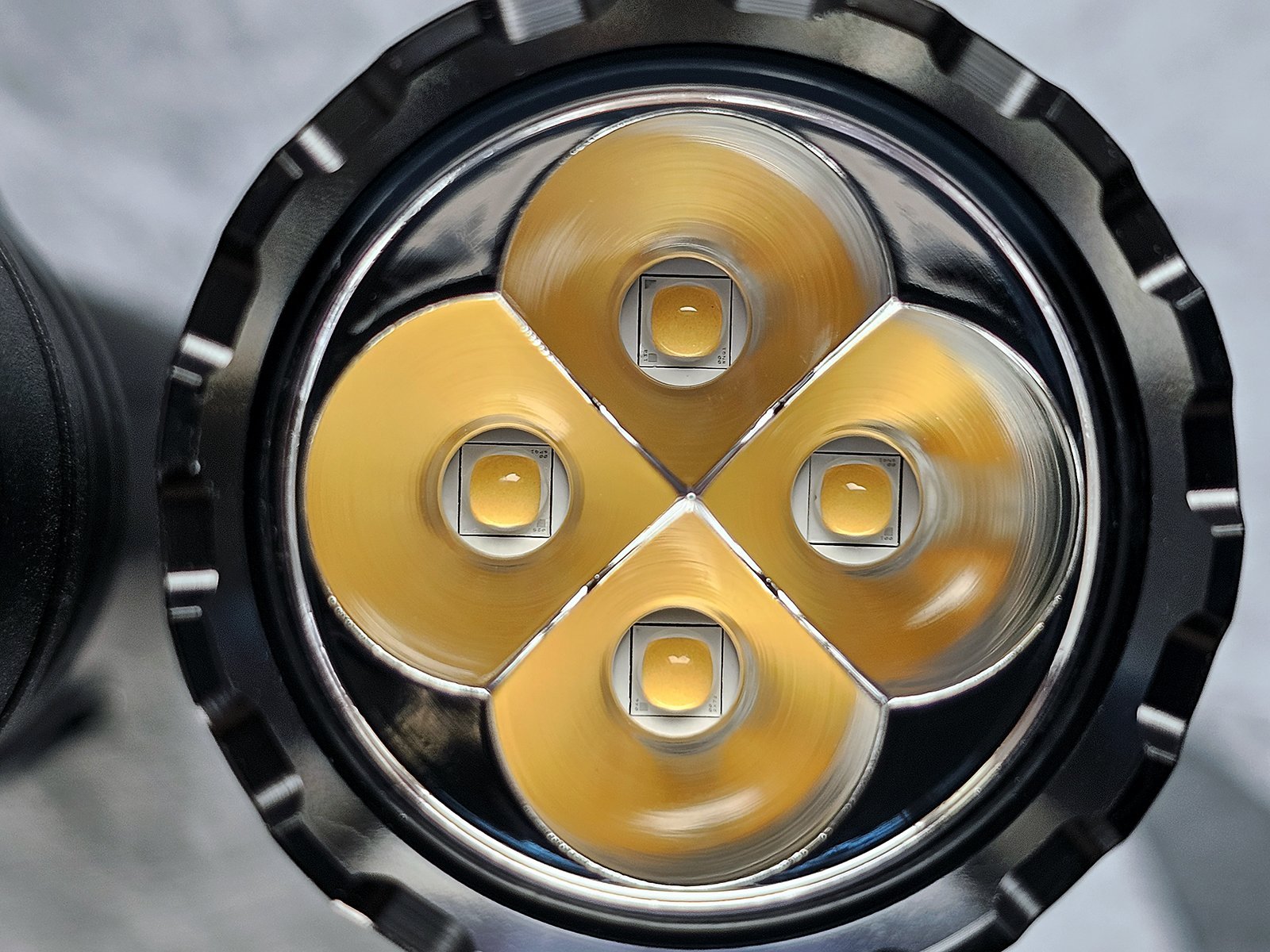
The tail cap is magnetic and the magnet is strong enough to hold the torch horizontally on my refrigerator. The threads are square cut and come well lubricated.
Removing the tail cap reveals the battery which has a white film covering its negative pole for secure shipping. You have to remove that film to operate the torch.
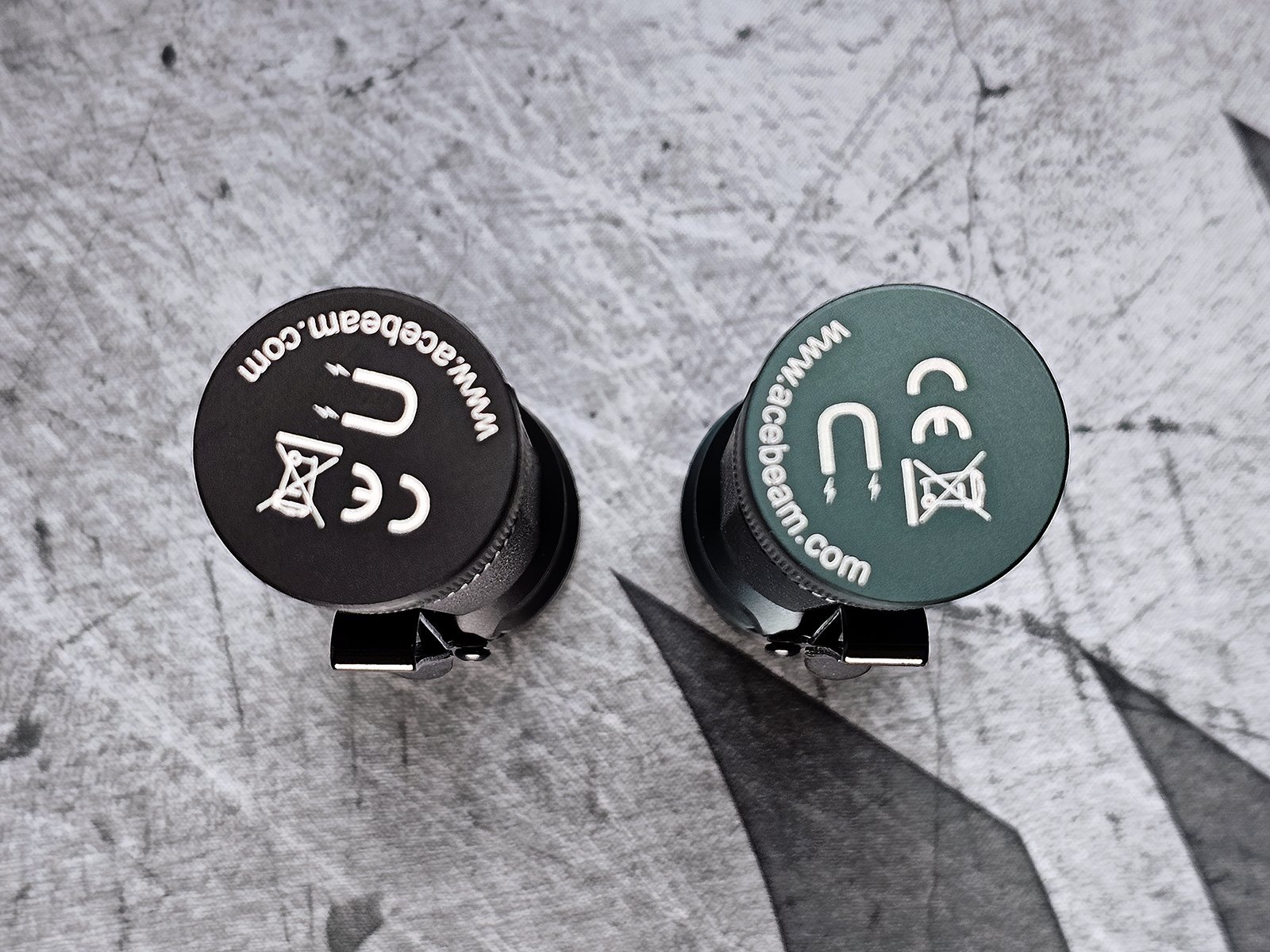
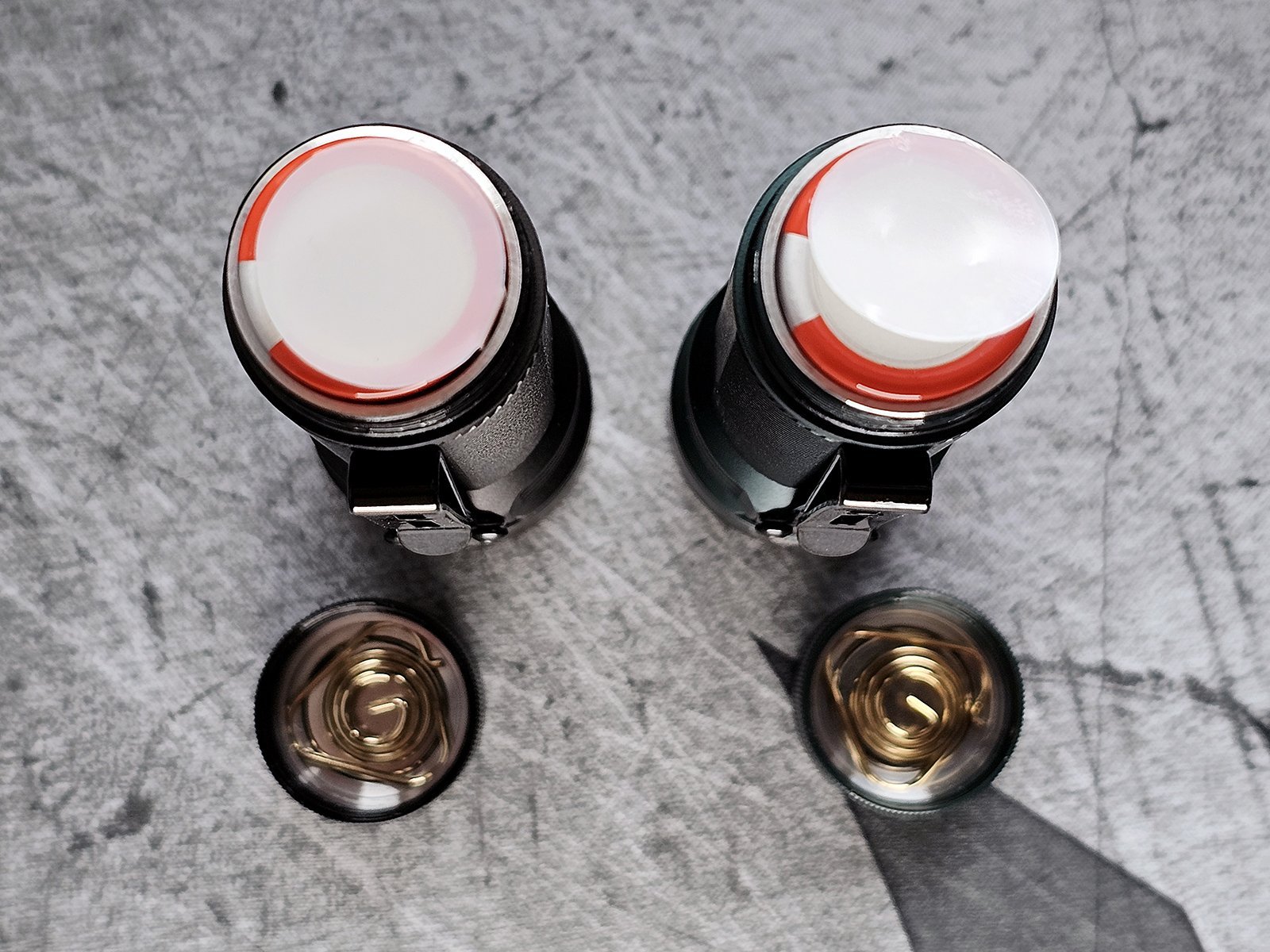
The battery is an Acebeam branded 21700 Li-Ion battery which is rated at a capacity of 5000mAh and maximum current of 15A.
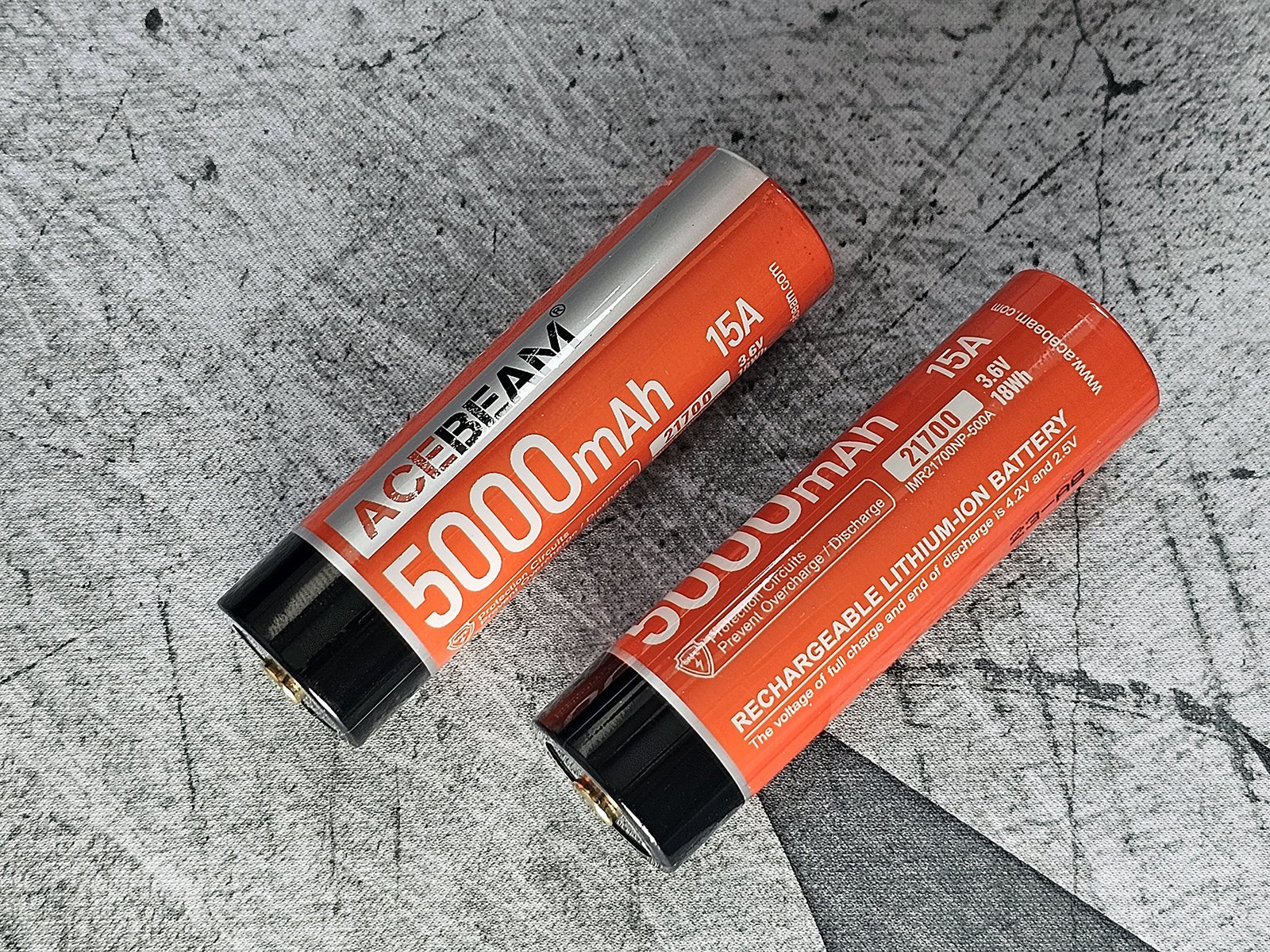
There is a high quality spring inside the tail cap which looks able to handle the current that the battery can provide. The driver side has a high quality double spring.
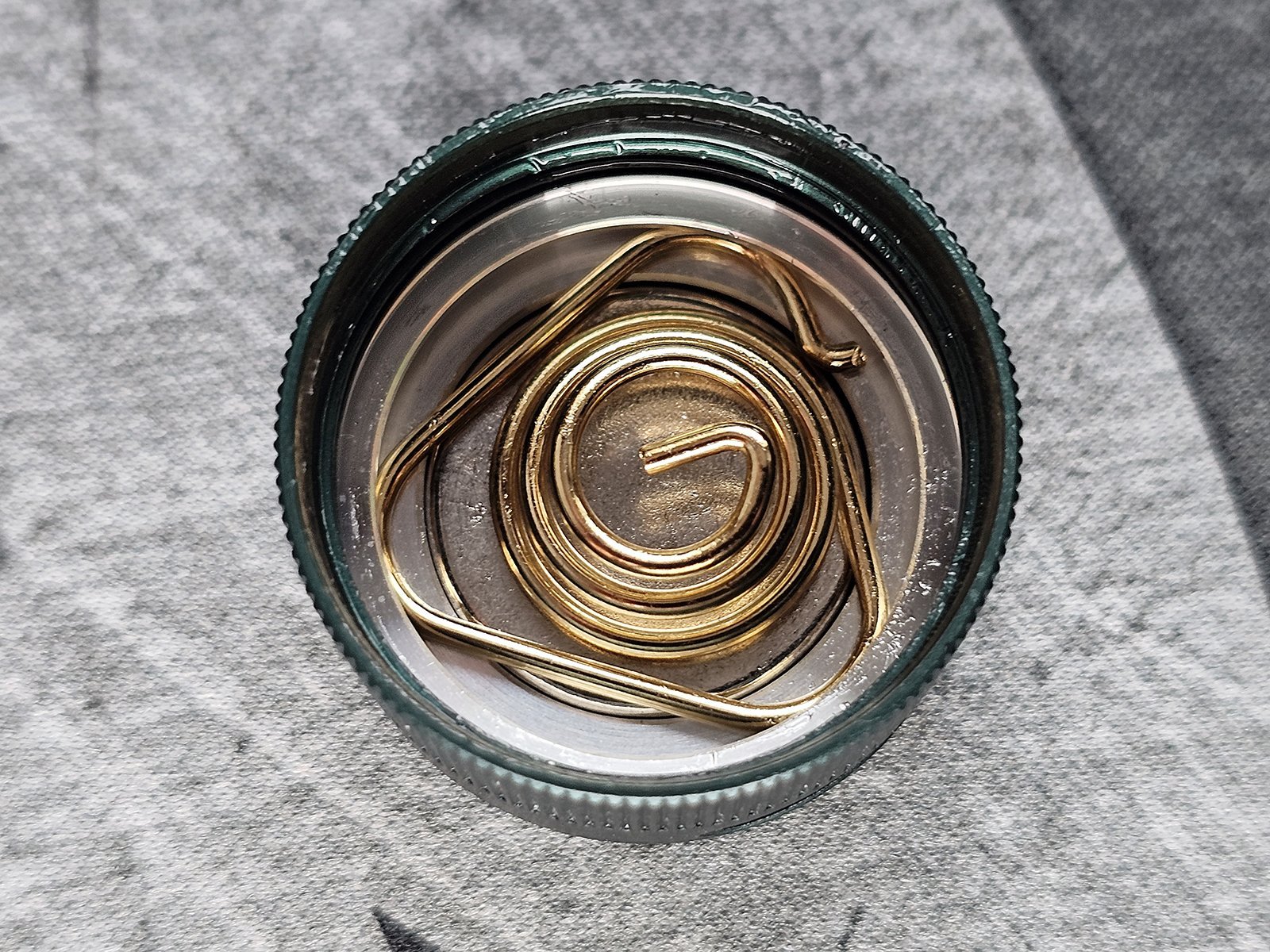

After a quick test fit of the traffic wands - I like them - let's proceed with the review.
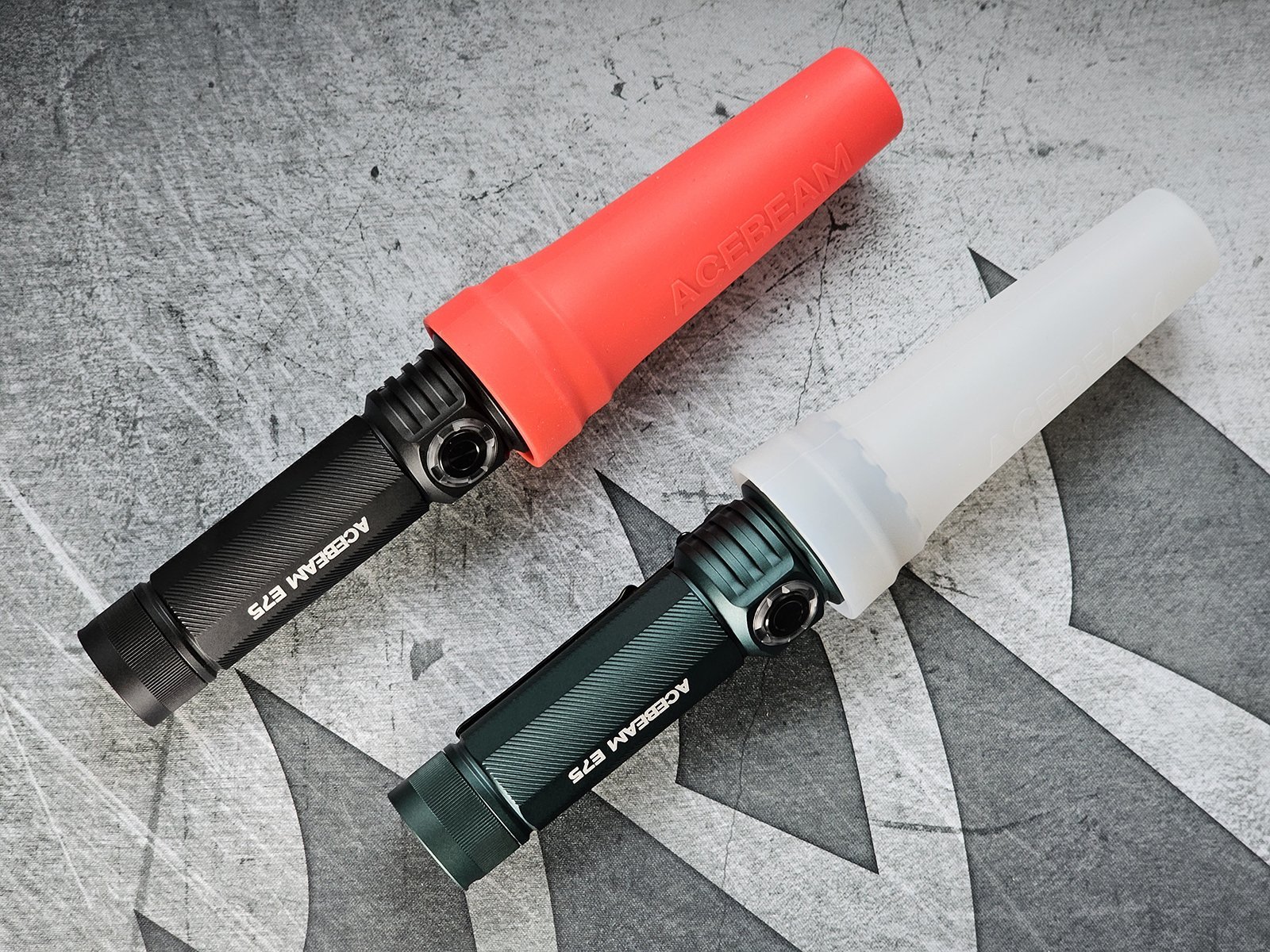

Specifications
The specifications of the Acebeam E75, as found on the manufacturer's website, can be seen in the following table:
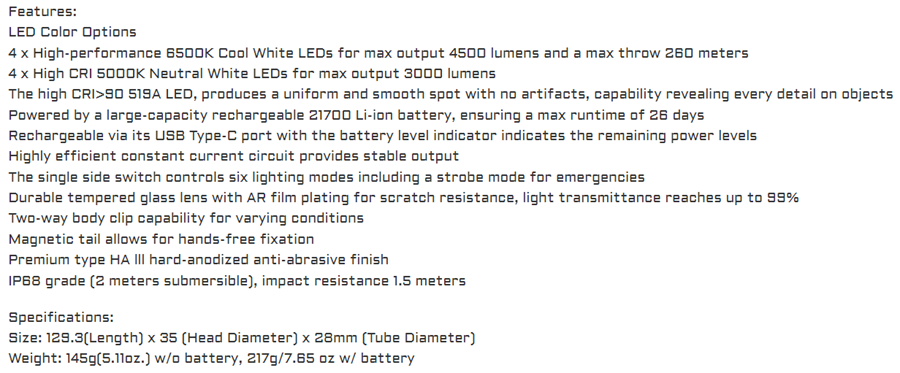
As expected, the more efficient Cool White Osram P9 6500K emitters have a higher output than the High CRI Nichia 519a 5000K.
The following 2 images, taken from the manufacturer's website, show the output of each emitter on all modes.

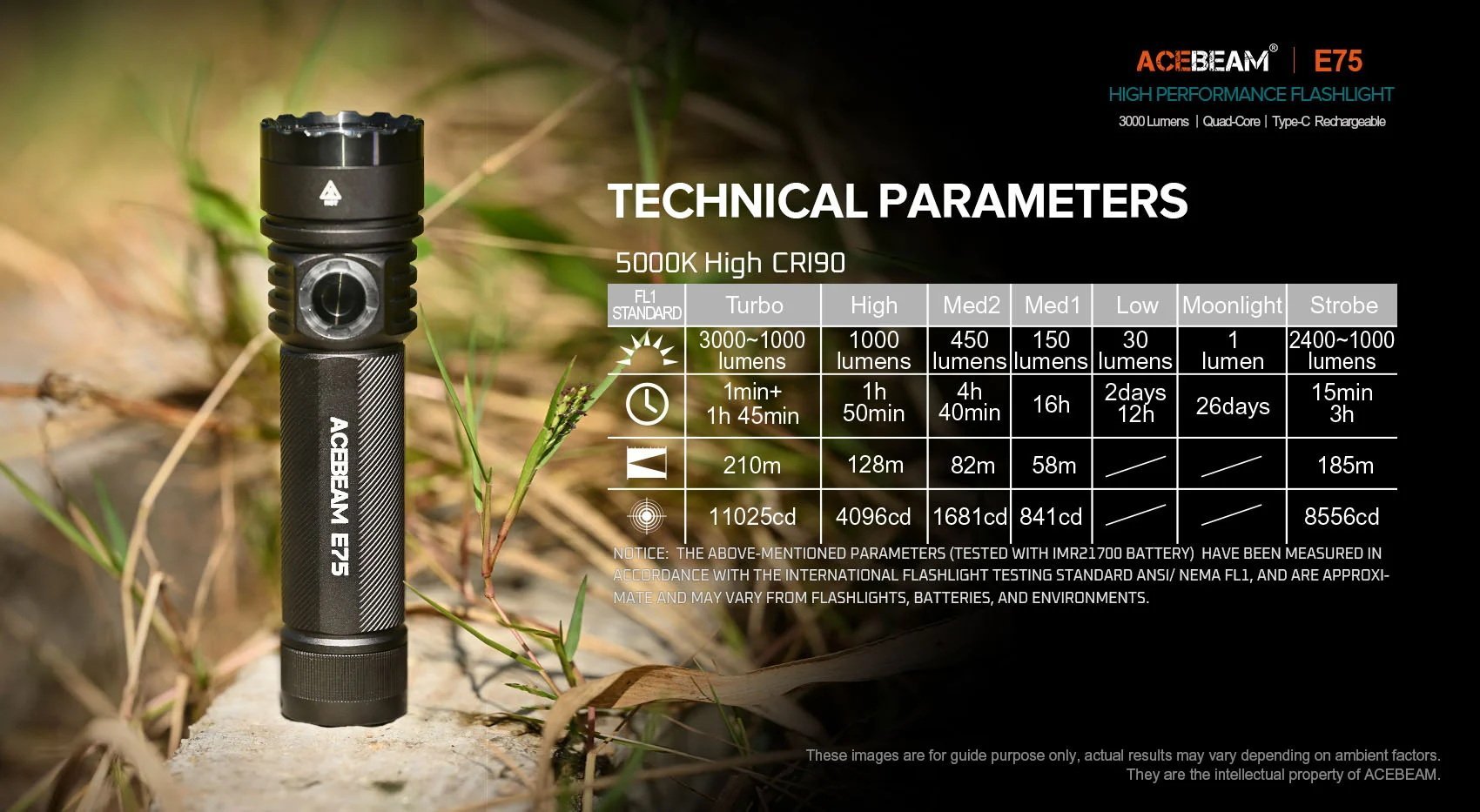
Other than the specifications dependant on the emitter type, the 2 variants share the same driver and body and therefore have the same features. Those include IP68 grade water and dust resistance and a 1.5m drop resistance.

Size Comparison
Size wise, the Acebeam E75 is similar to any other quad emitter 21700 powered torch. Here are my 2 samples, flanking the Olight Seeker 2 Pro.
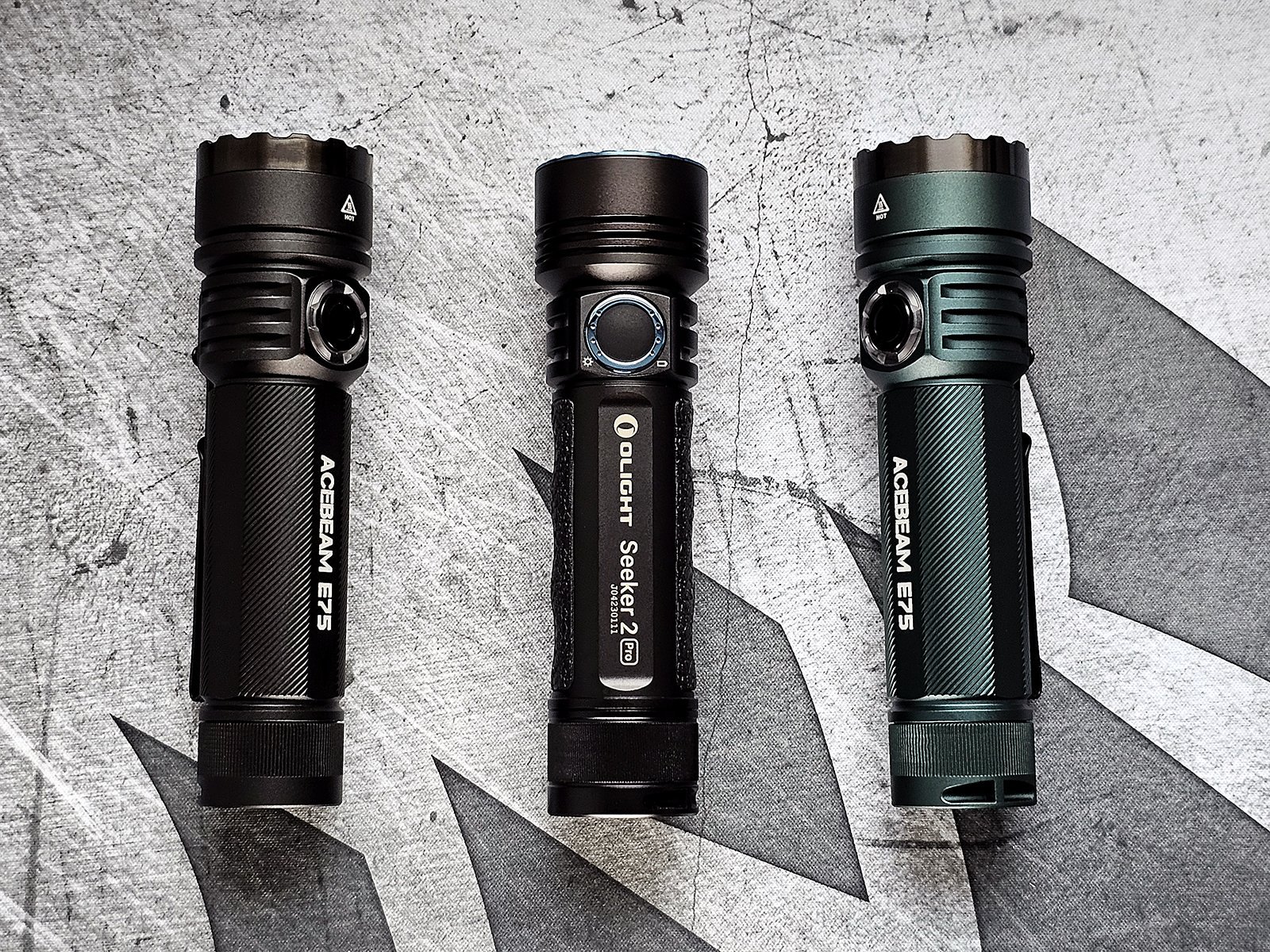
Indicator LEDs and User Interface
The see-through plastic ring surrounding the button allows 4 indicator LEDs to shine through. Those provide information about the battery status, as well as the charging status, when you are charging the battery inside the torch.
When the indicator LEDs are green the battery is above 20%, when they are red it is between 20% and 10% and when they are flashing red, it is below 10%.
This system only serves to warn the user when the battery is 20% or lower, so it will need charging soon. Some competitive products have more elaborate battery status information, which can be significantly more helpful. When there is no easy way of knowing if your battery is at 100% or 21%, there are many situations where you may find yourself running out of battery.
So, Acebeam, the 4 indicator LEDs are already there. Put them in a row, change the driver a bit and make them light up to show the remaining battery in increments of 25%. Would that increase the price? Most probably, but it is a feature worth having.

Despite finding the indicator LED system inadequate, the user interface of the Acebeam E75 is simple and intuitive. The way to control the light is described in the following image.

The user interface of the Acebeam E75, in my own words, is as follows:
-
From Off
- Click to turn on (with memory for the 4 main modes, Low, Med1, Med2 and High).
- Click and hold to turn on at Moonlight mode.
- Double click to turn on at Turbo
- Triple click for Strobe.
-
From On
- Click to turn off.
- Hold to cycle through the main modes (Low, Med1 ,Med2, High). You can do that even from Moonlight, Turbo or Strobe.
- Double click for Turbo. Double click again to return to previous mode.
- Triple click for Strobe. Click to turn off, click and hold to cycle through the main modes or double click for Turbo. From Turbo, double click to return to previous (before Strobe) mode. There is no way to go directly from Strobe to a previous, non Turbo mode.
The Acebeam E75 has a locking feature. To engage the lock, press and hold from off. The torch will turn on, on Moonlight mode. Keep holding for 3 more seconds and the emitters will flash 3 times and turn off. The torch is now locked. If you press the main switch while the torch is locked, the indicator LEDs flash green and red alternatively, to indicate that the torch is locked. If you keep holding for 3 seconds the emitters will flash 3 times and the torch will unlock and turn on, on Moonlight mode.
There is also the option of a hardware lock. A slight twist of the tail cap will break the continuity between the negative terminal of the battery and the driver. This will ensure that the torch will not turn on accidentally and remove any parasitic drain, so it is advantageous over the software locking feature.
Modes
As we saw in the specifications section, each of the 2 emitter options provide different output levels, with the Cool White Osram P9 6500K offering higher output and the High CRI Nichia 519a 5000K CRI90 offering better light quality.


I do not own a multi thousand dollar worth integrating sphere, just a logging Lumen meter and a home made integrating tube. The array is calibrated with 3 professionally measured lights and gives me consistent results, but there is definitely room for error and deviations are to be expected.
The output levels of the Acebeam E75 for both emitter options can be seen in the following table. The numbers provided by Acebeam are in black and my measurements are in green for the Cool White version and in orange for the High CRI version.
Surprisingly, all my measurements show higher output than specifications, except for the Moonlight modes on both emitters and the Low mode on the High CRI. Very impressive!
The Candela and Throw I measured are close to the specifications for the High CRI version but lower than specifications for the Cool White version.
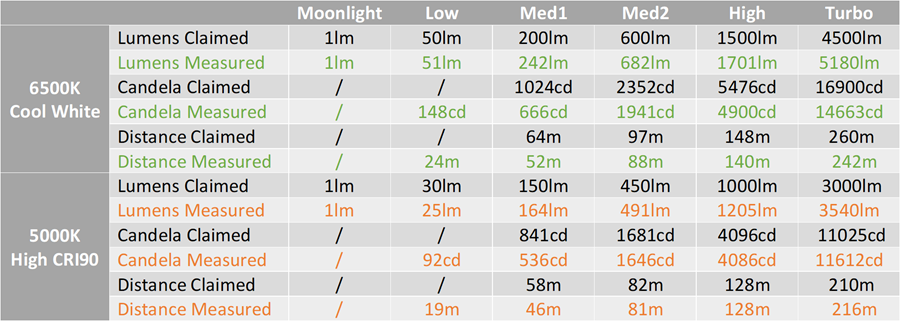
The following graph shows the lumen output on all modes for both emitters. The Cool White is more powerful on all modes, except of course Moonlight, and the gap increases as the output level increases.
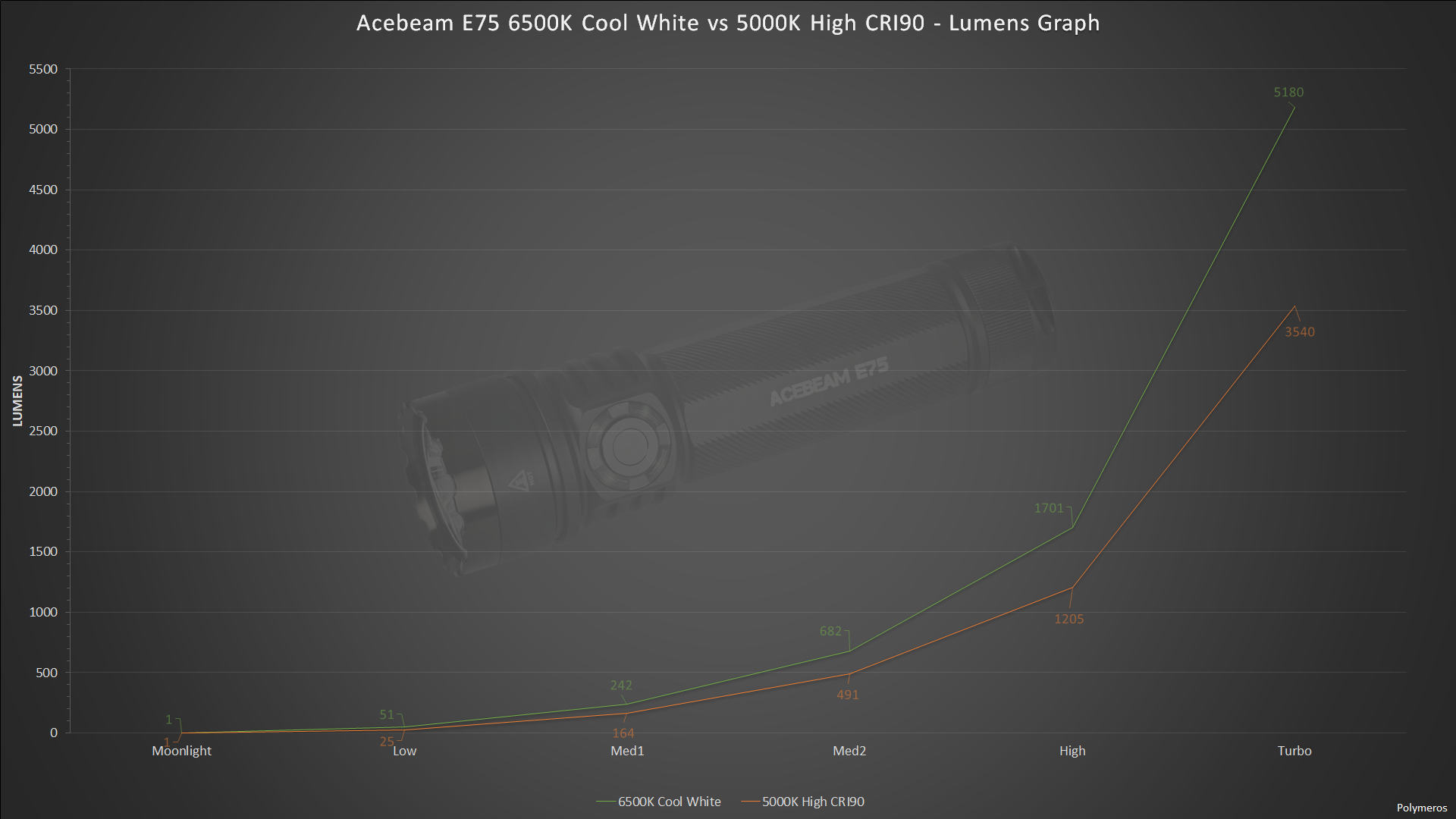
The next graph shows the throw on all modes for both emitters.
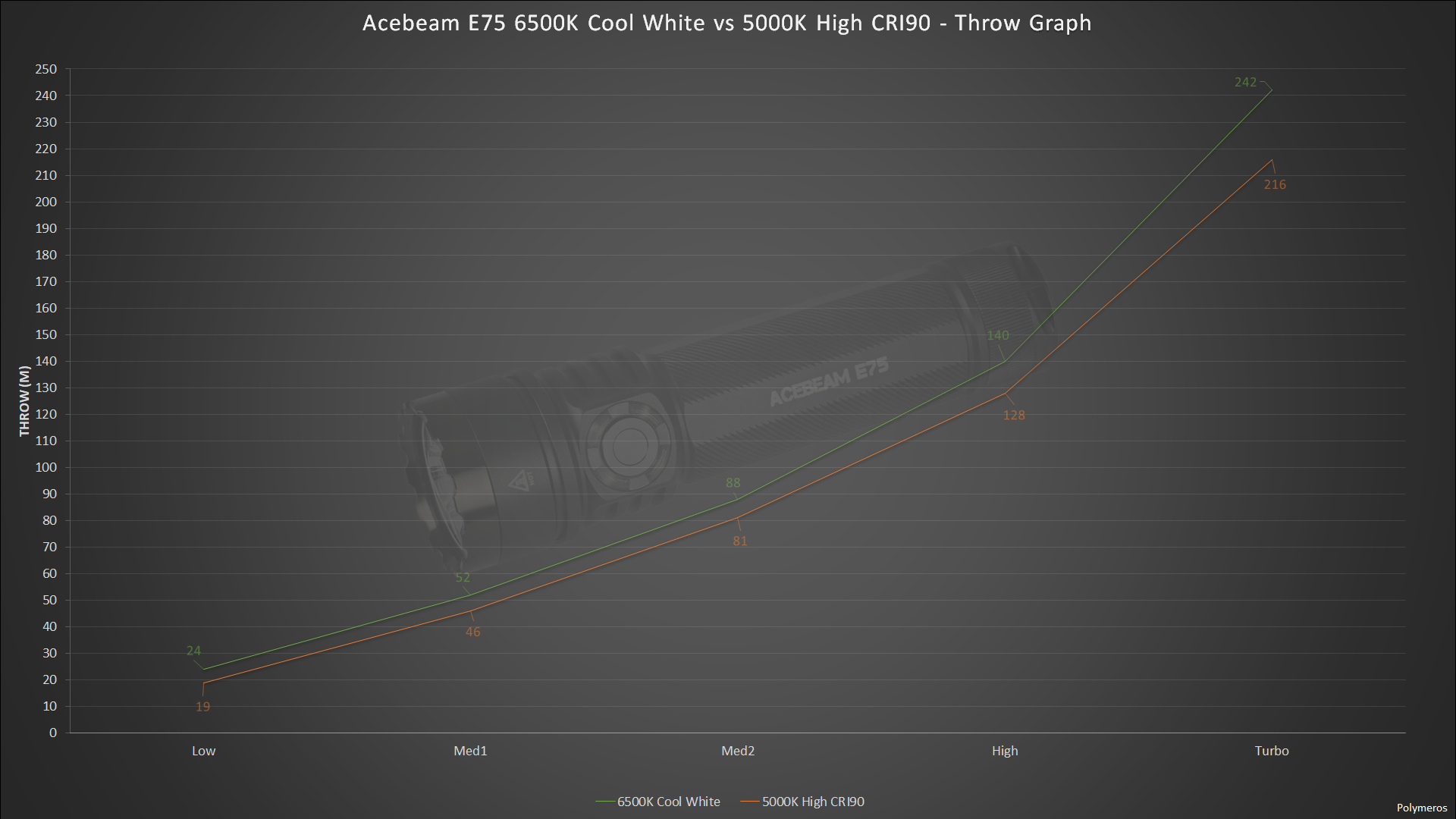
Photometry
I took some photometry readings with an Opple Light Master Pro. The results are in the following table.

The CCT of both emitter types is warmer than the specifications, which I like. The CRI is up to 70 on the Cool White Osram P9 and above 95 on the High CRI Nichia 519a.
The Δuv shows that, as expected, the Osram P9 has a strong green tint which becomes a bit more neutral as the output increases. The Nichia 519a on the other hand has a slightly positive Δuv, being in practice quite neutral and even goes below BBL on Turbo.
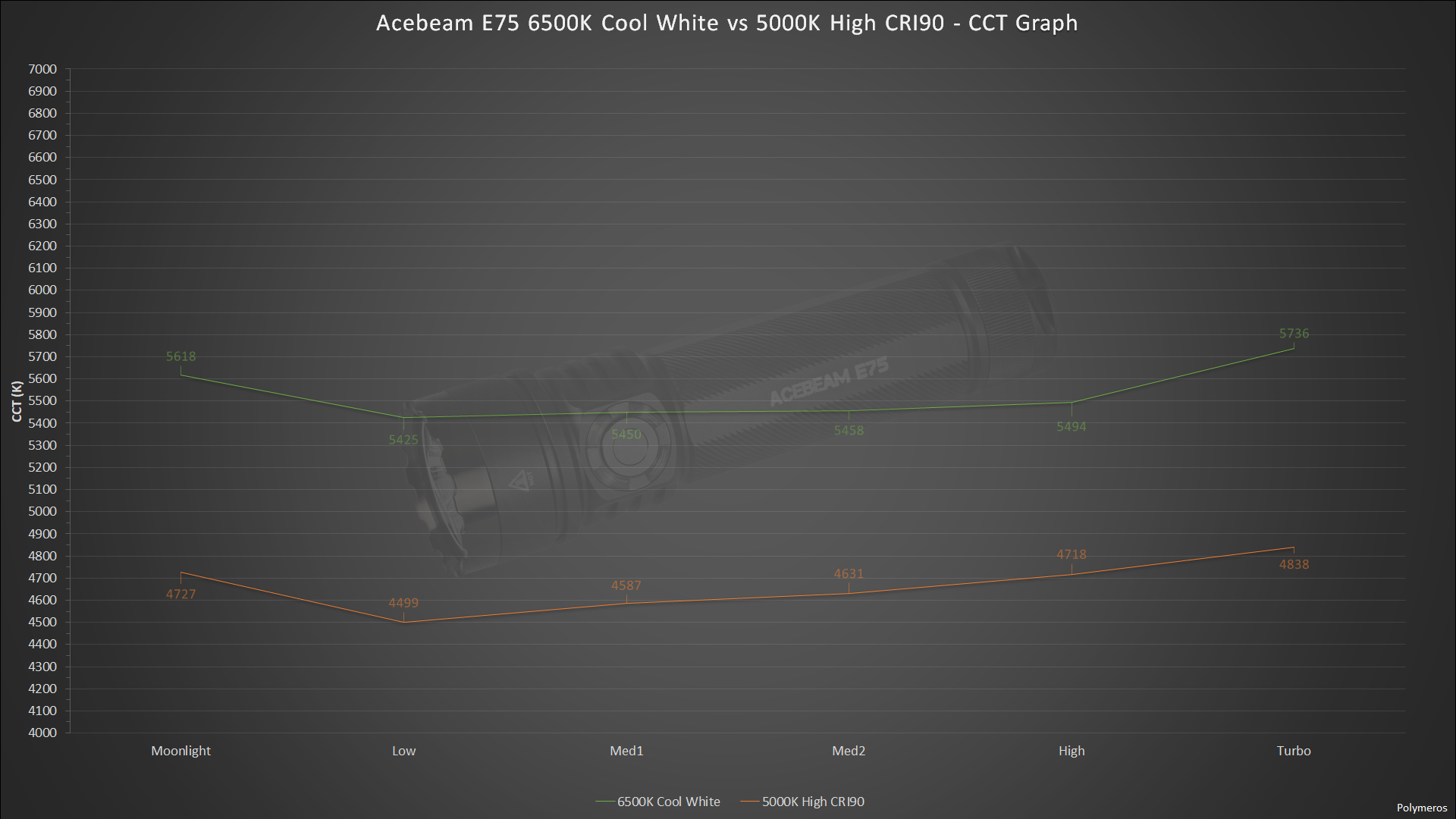
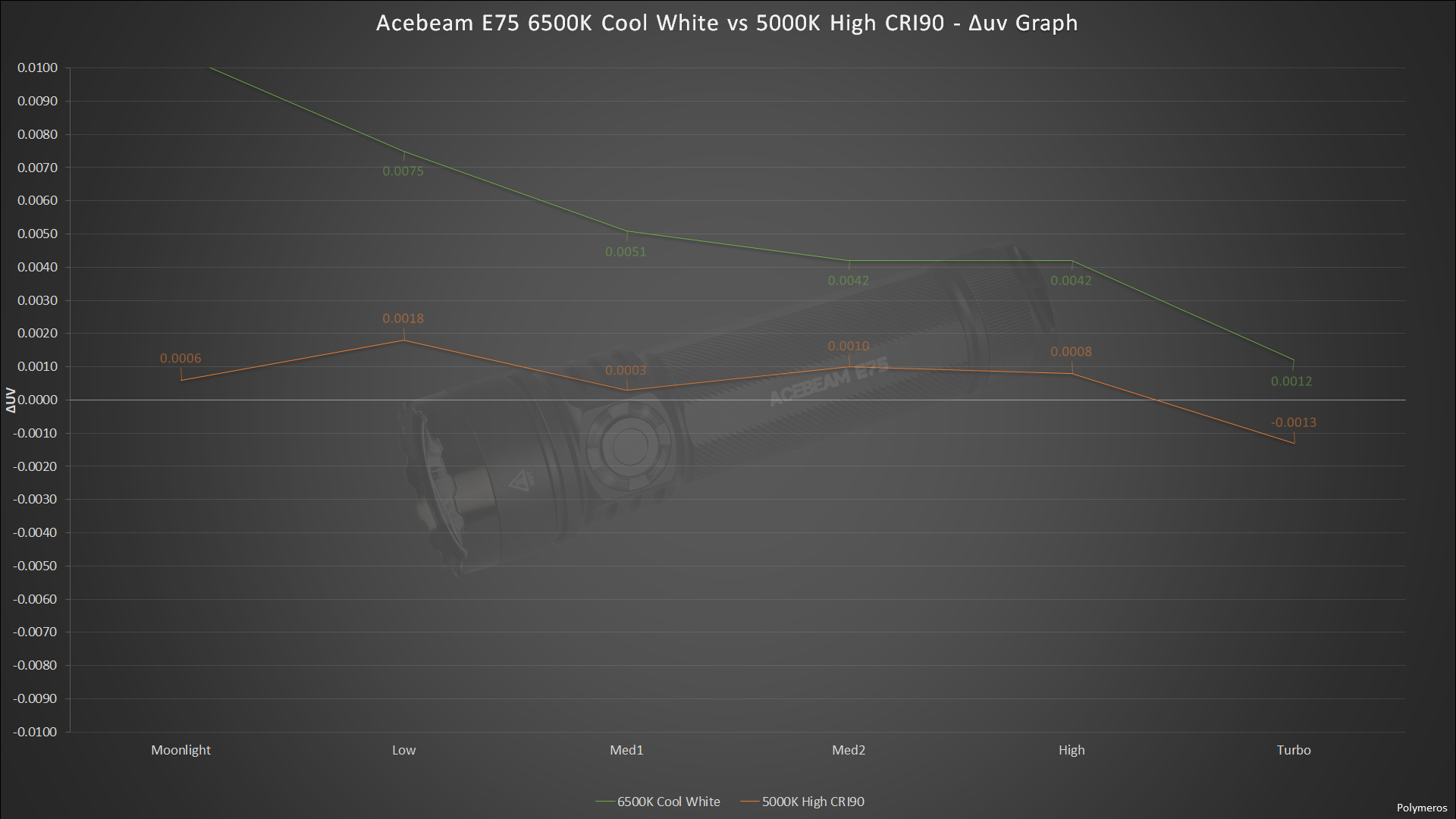
Here is a photo of the tint on Low. The Cool White Osram P9 6500K is on the left and the High CRI Nichia 519a 5000K is on the right. The photo was taken with a manual white balance of 5500K.

Beam Profile
The beam pattern of both emitter types in the Acebeam E75 is the same. There is a lot a flood but also a defined hot spot. The 4 pedal flower pattern is characteristic of the quad emitter configuration.
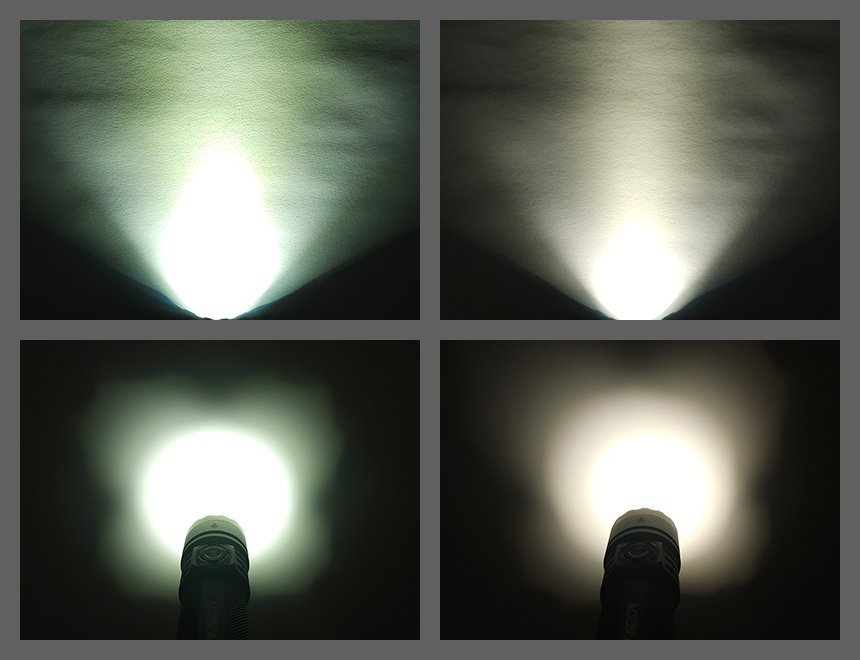
Video Comparison
I took a short video, comparing the Cool White Acebeam E75 to the High CRI. The distance from where I am standing to the end of the lane is 70m.
Driver
The driver of the Acebeam E75 is a digitally regulated, constant current boost driver, which takes the 3.7V from the battery and delivers 6V to the emitter array. Both emitter types are 3V, so they are arranged in 2 parallel banks of 2 emitters in a row to work with the 6V that the driver provides. This arrangement should be able to maintain constant brightness regardless of the battery voltage. The driver also features over charging protection, low voltage protection, over current protection and smart temperature control.
Here are some detailed photos of the 3 PCBs that comprise the driver.
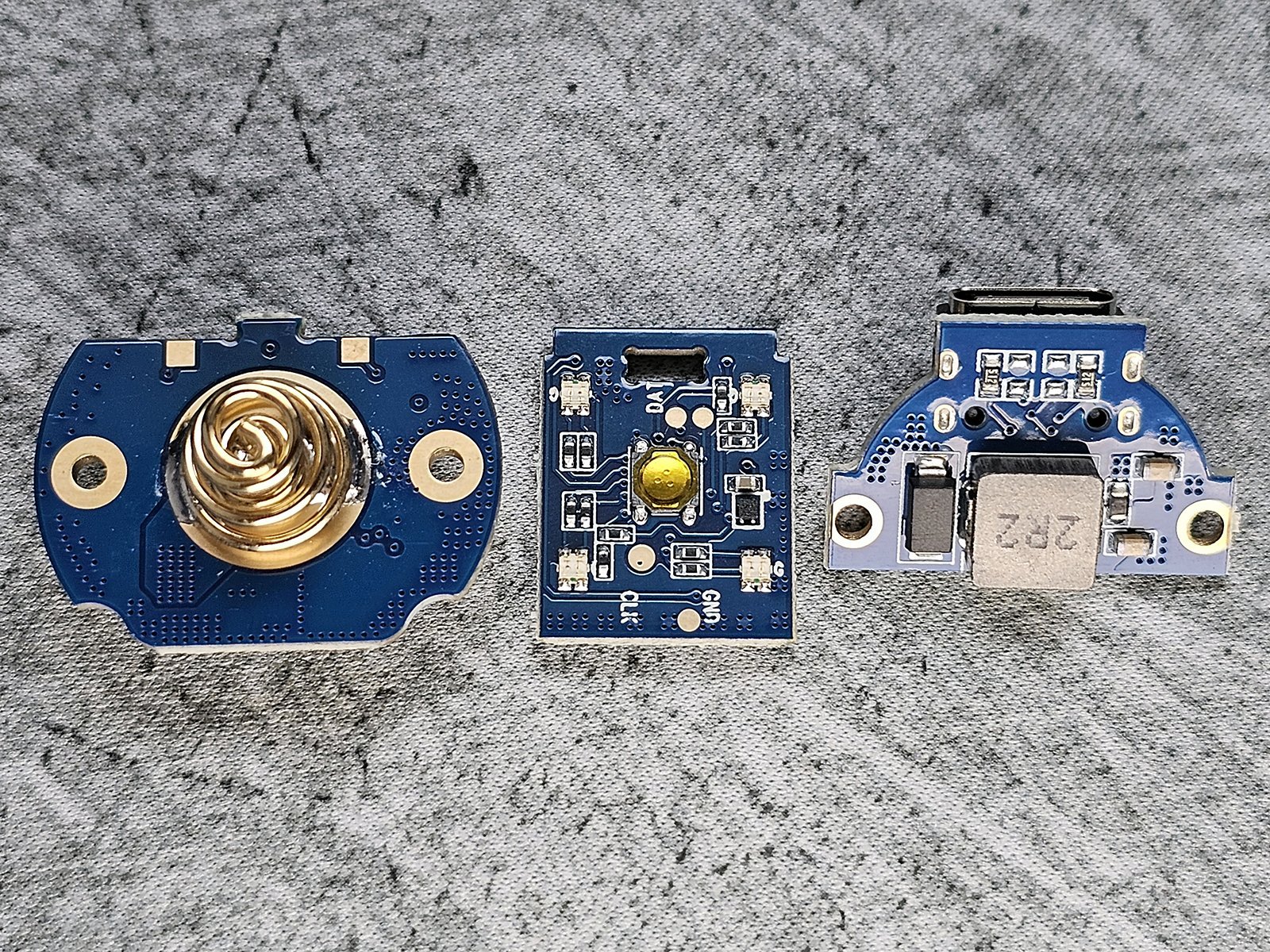
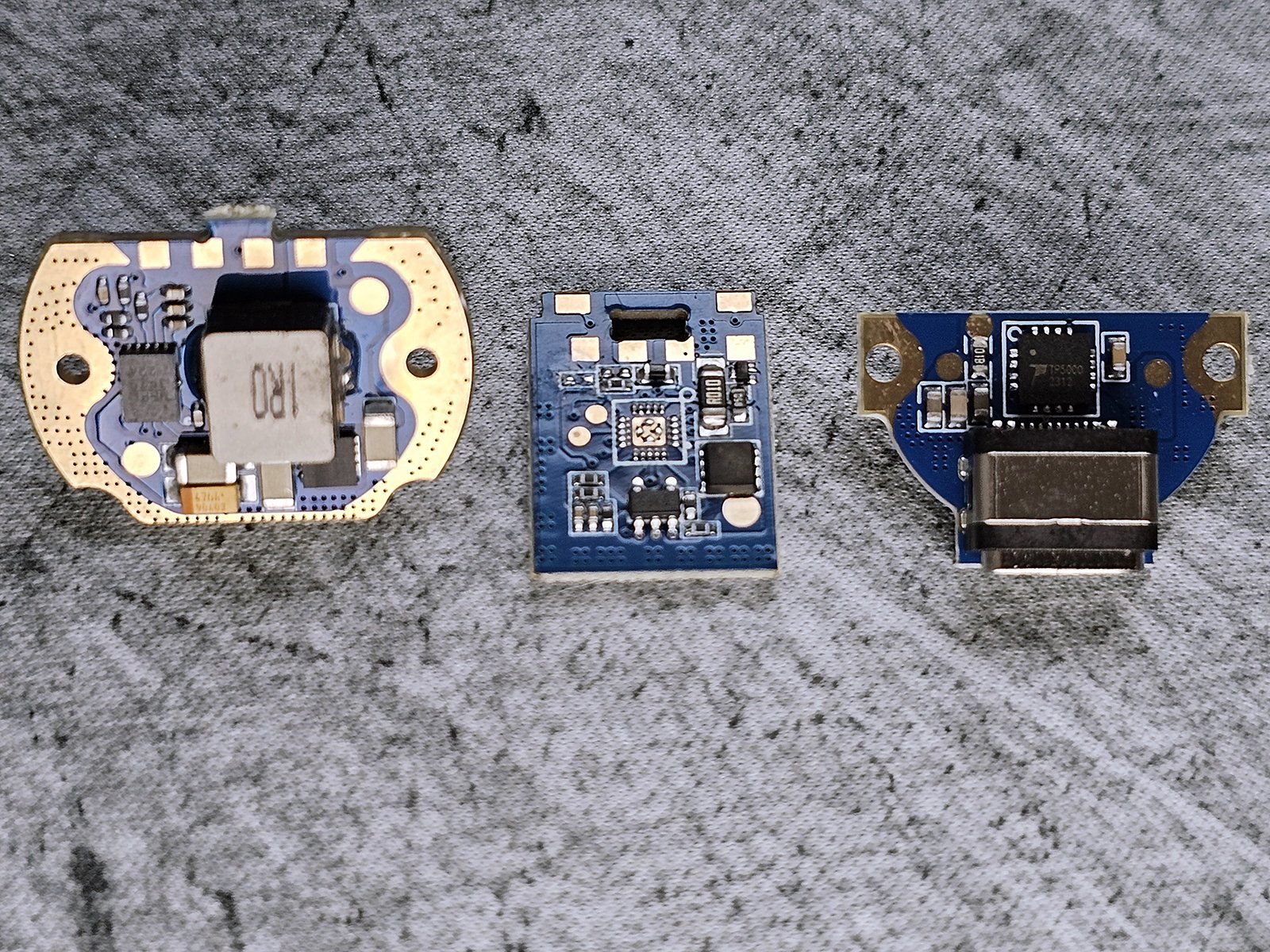
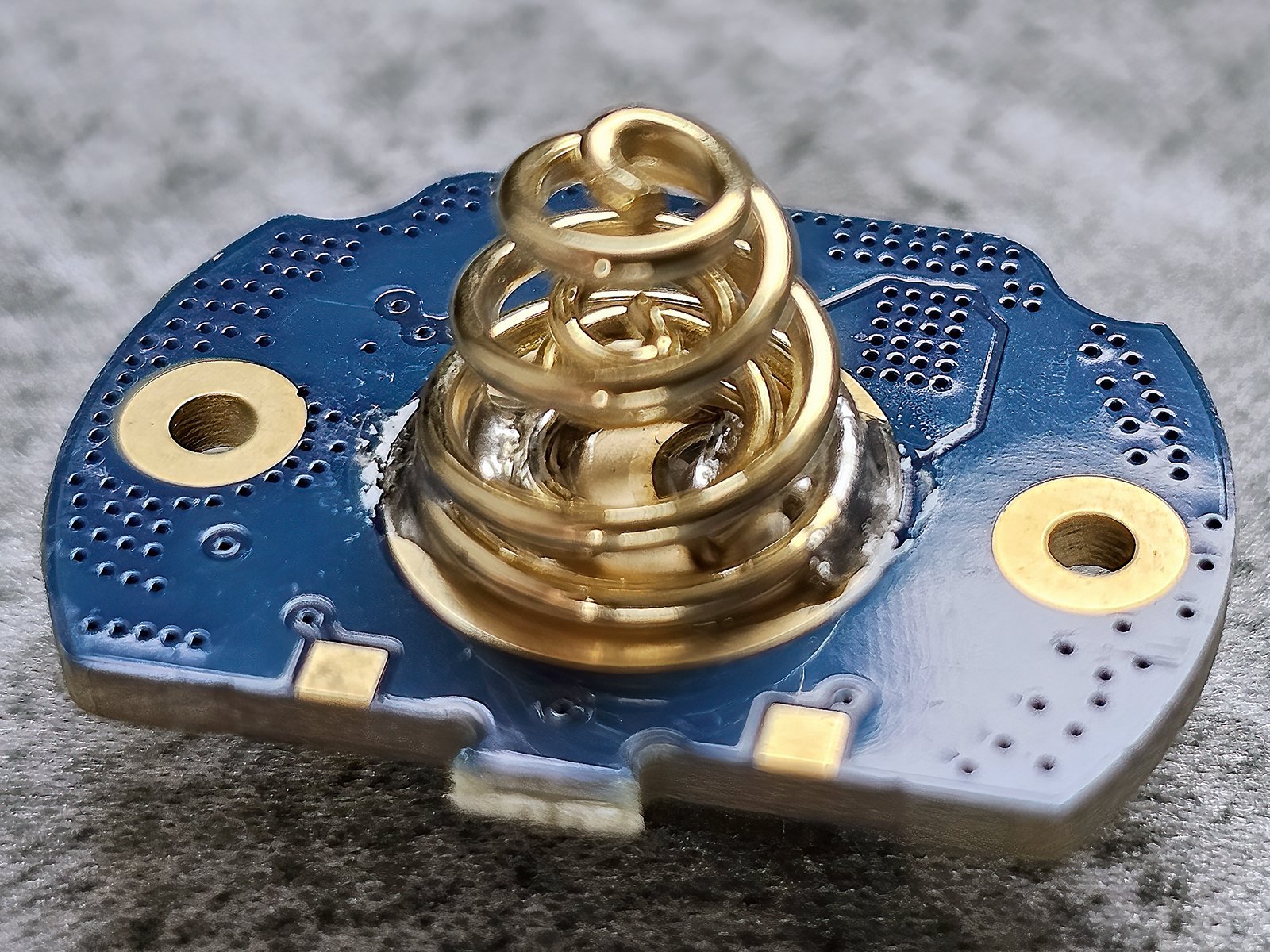
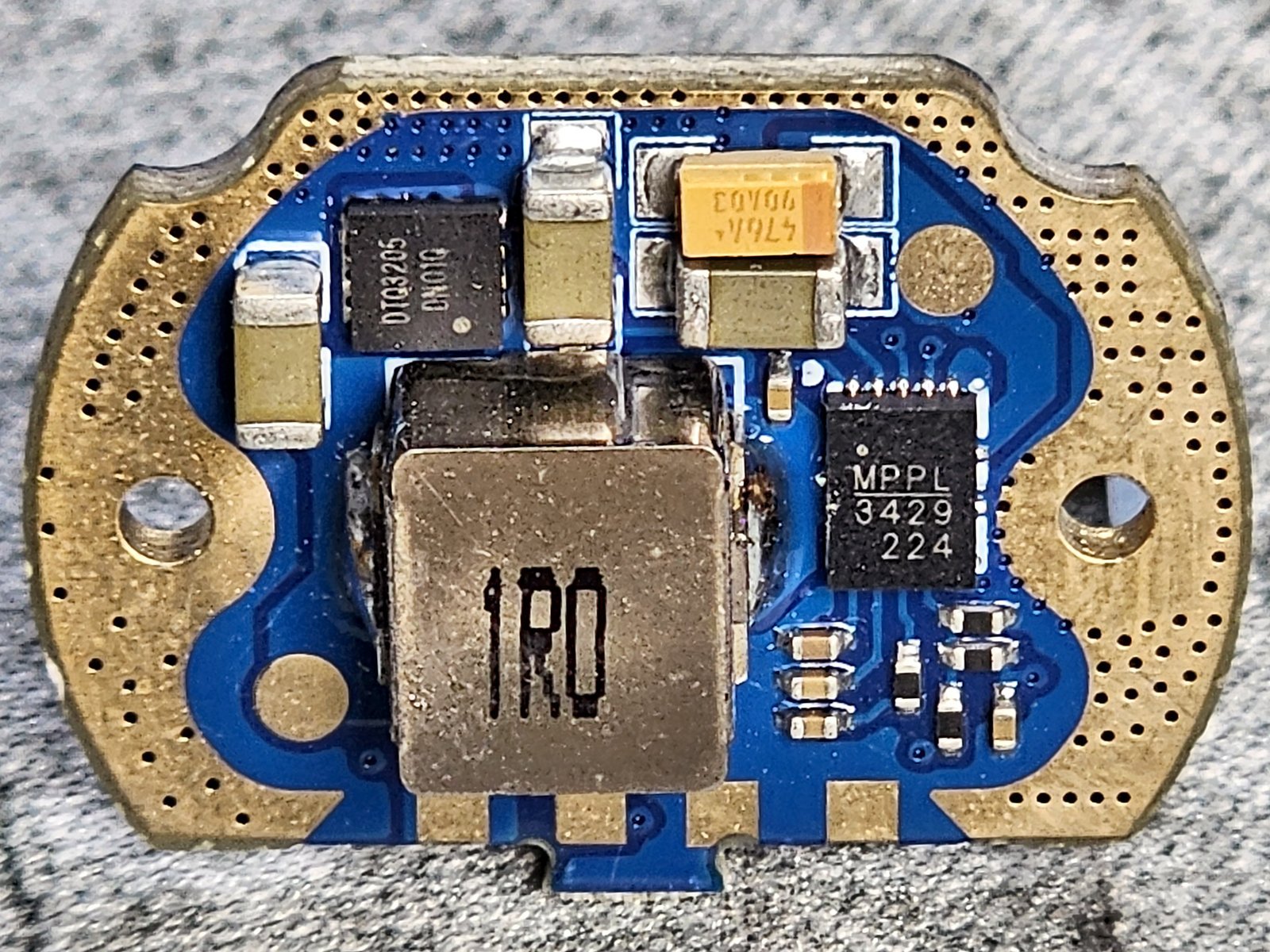
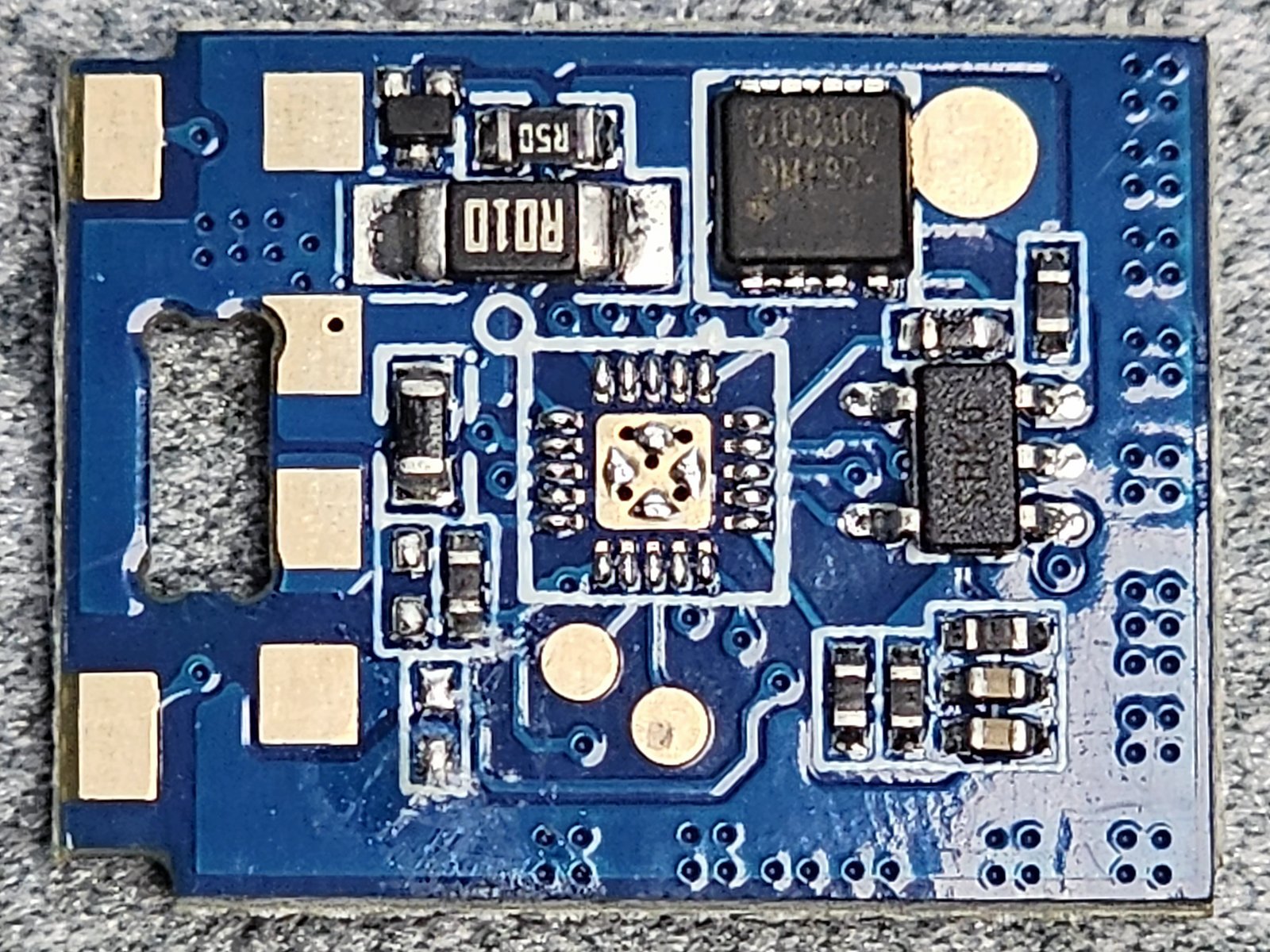
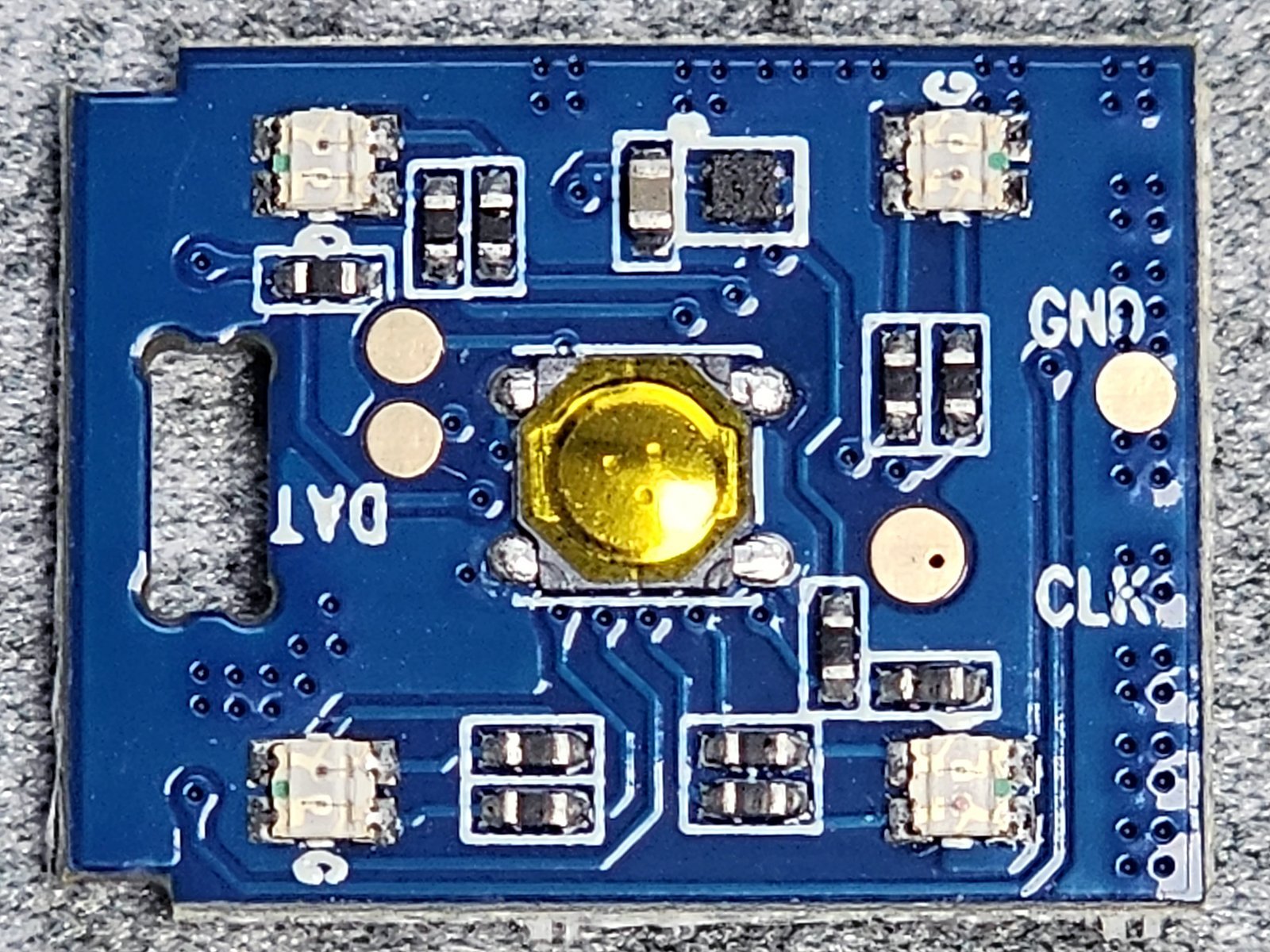
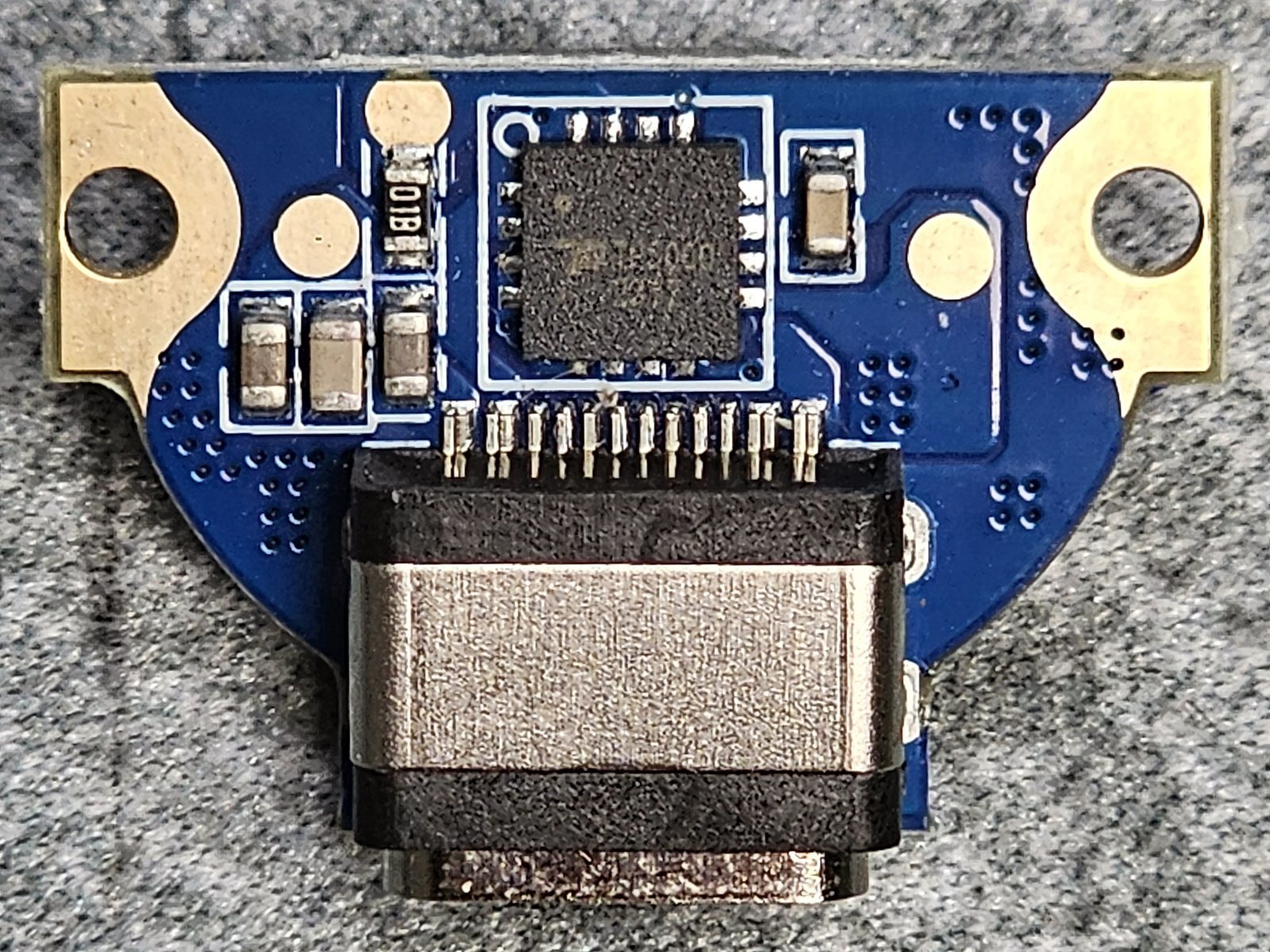
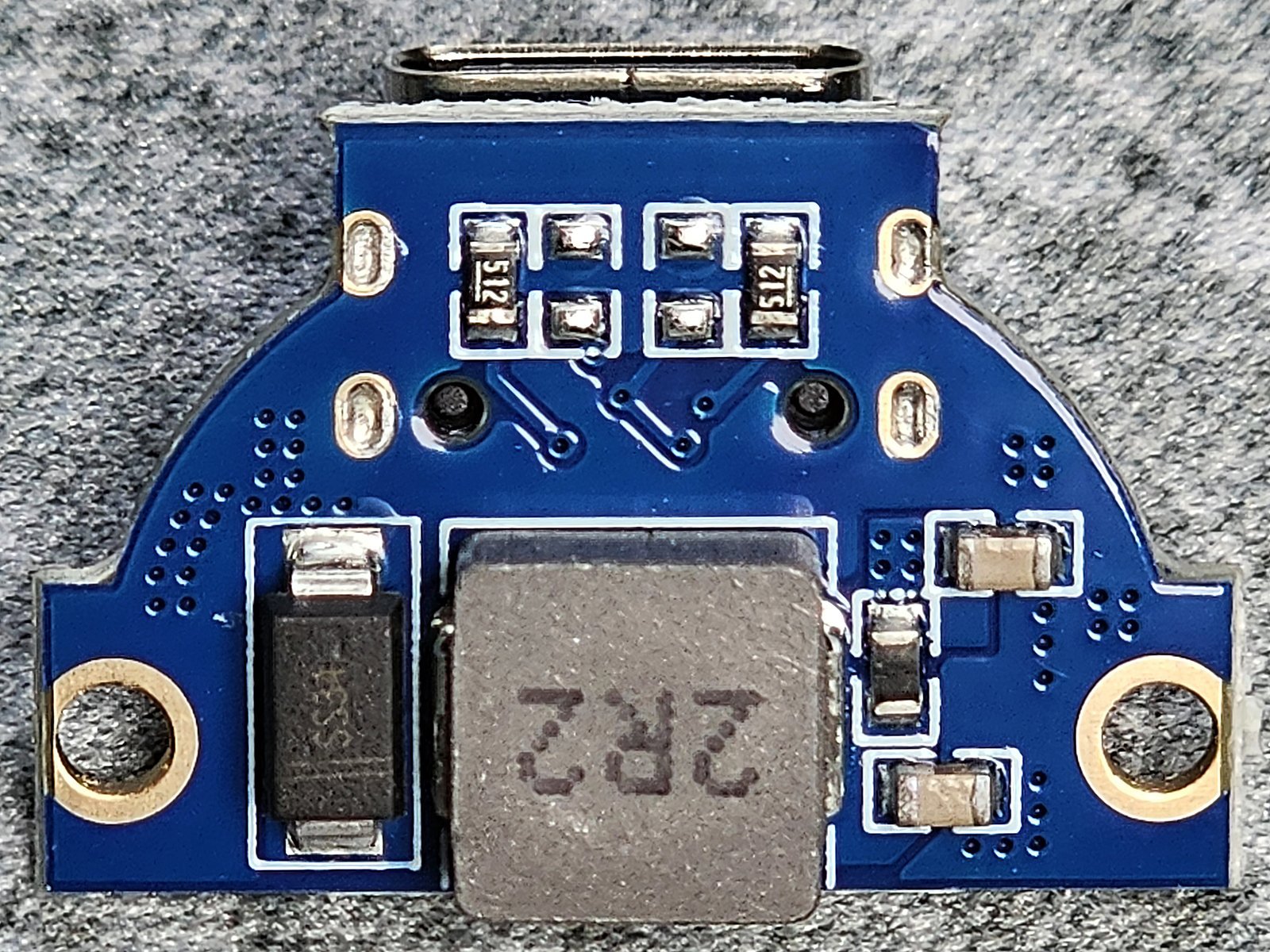
There is no visible PWM, in any of the modes as the driver pulses at a very high frequency.
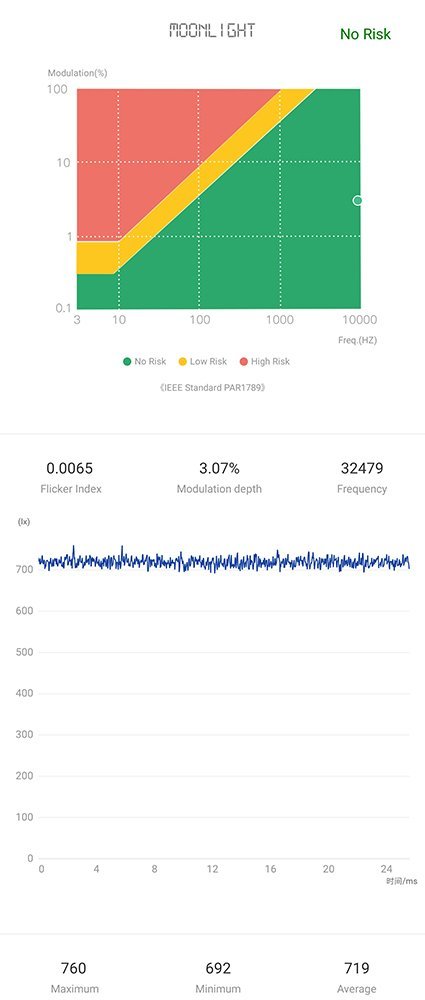
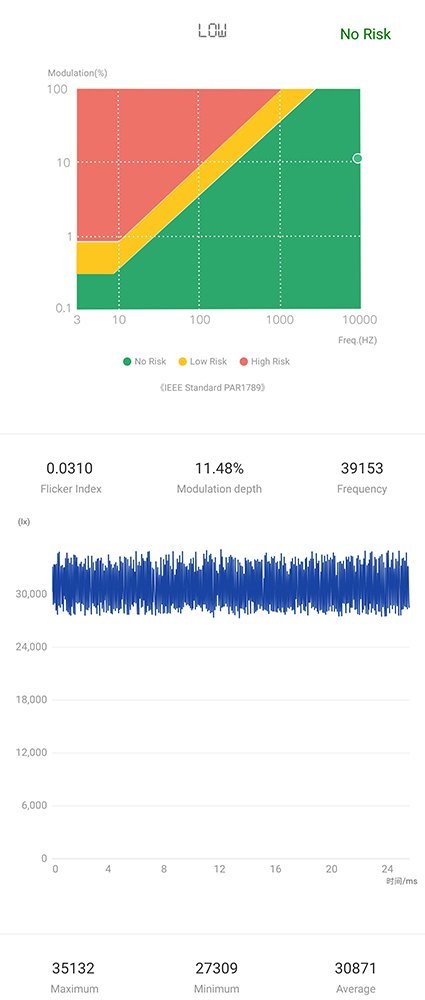
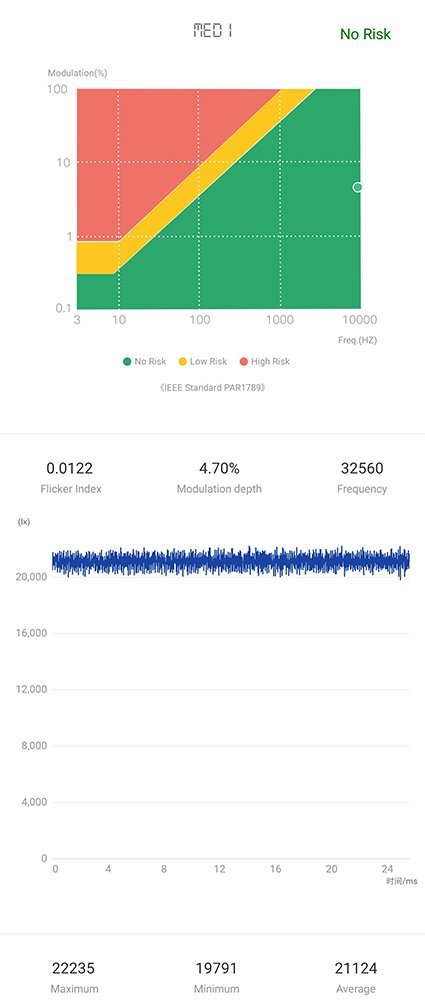
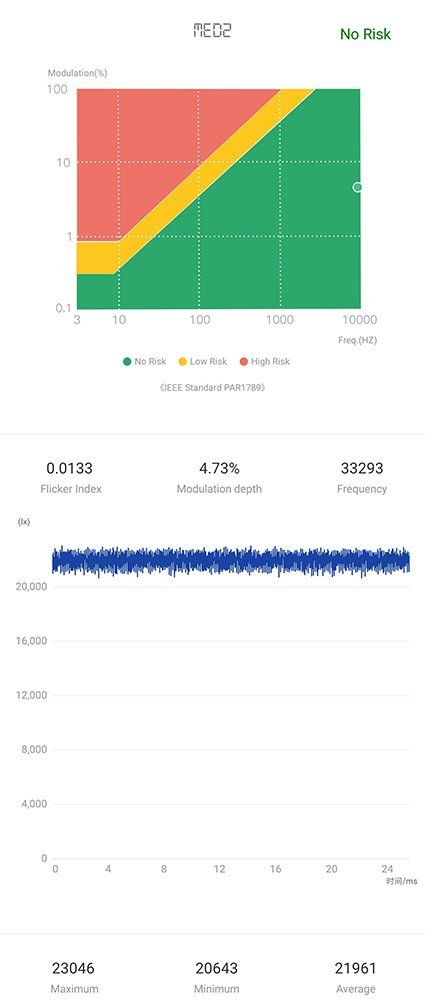
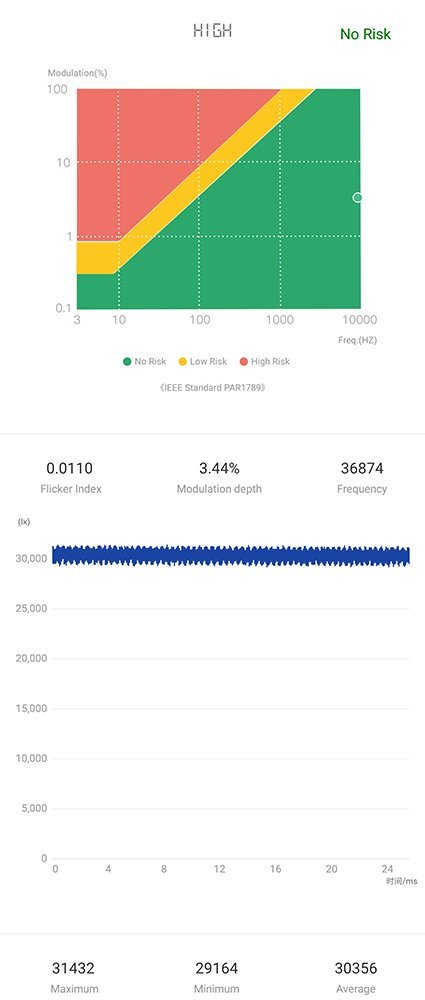
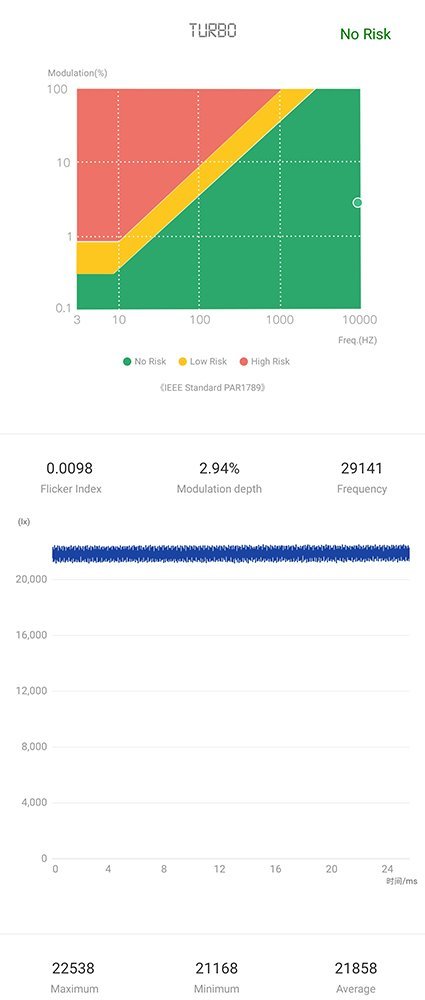
When thermal regulation kicks in, the frequency drops significantly but still remains comfortably high.
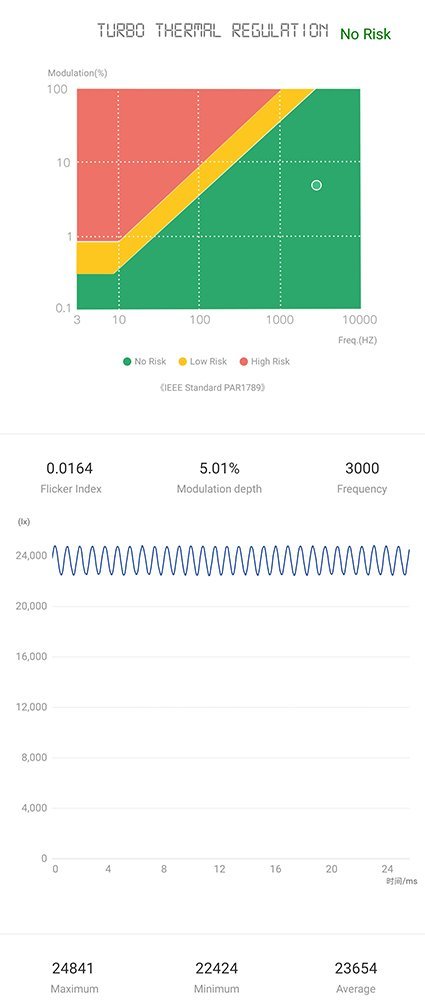
Here is what my camera saw, at a shutter speed of 1/12000 sec. No tearing at all.
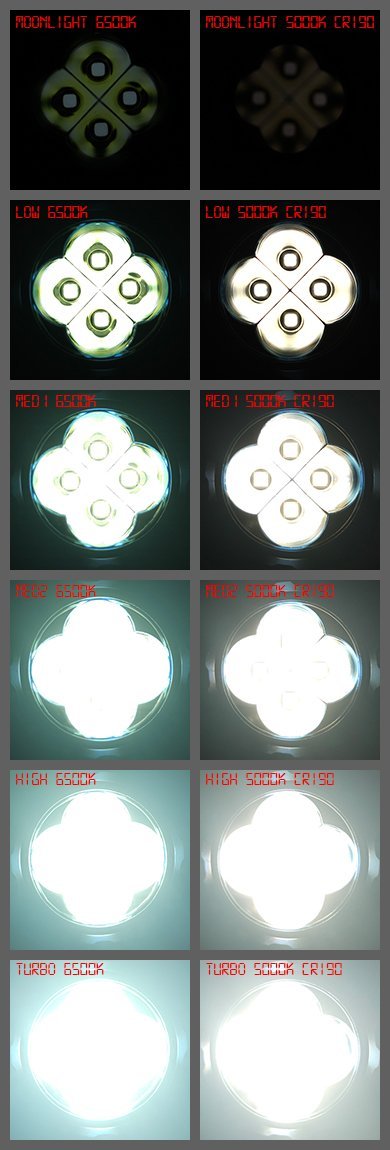
Current Draw
The following table shows the current draw of both emitter types on all modes. It also shows the respective measured Lumen output and the ratio of Lumens per Amp.
The current draw is a little higher for the Cool White emitter than for the High CRI one, on all modes except Moonlight. The output on the other hand is significantly higher for the Cool White emitters, giving them a higher Lumens per Amp ratio and therefore proving their higher efficiency.

The following charts illustrate this very clearly.
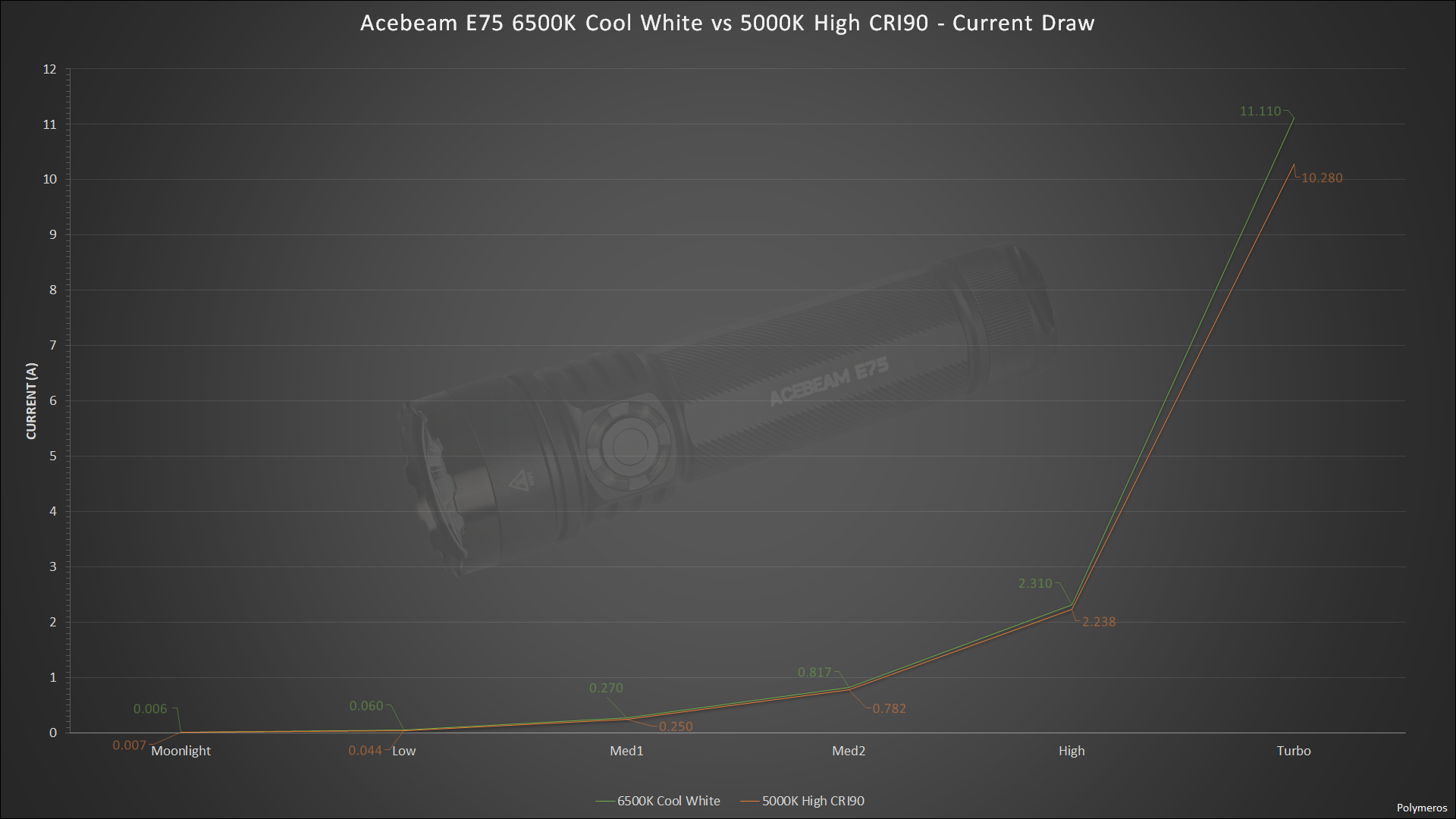
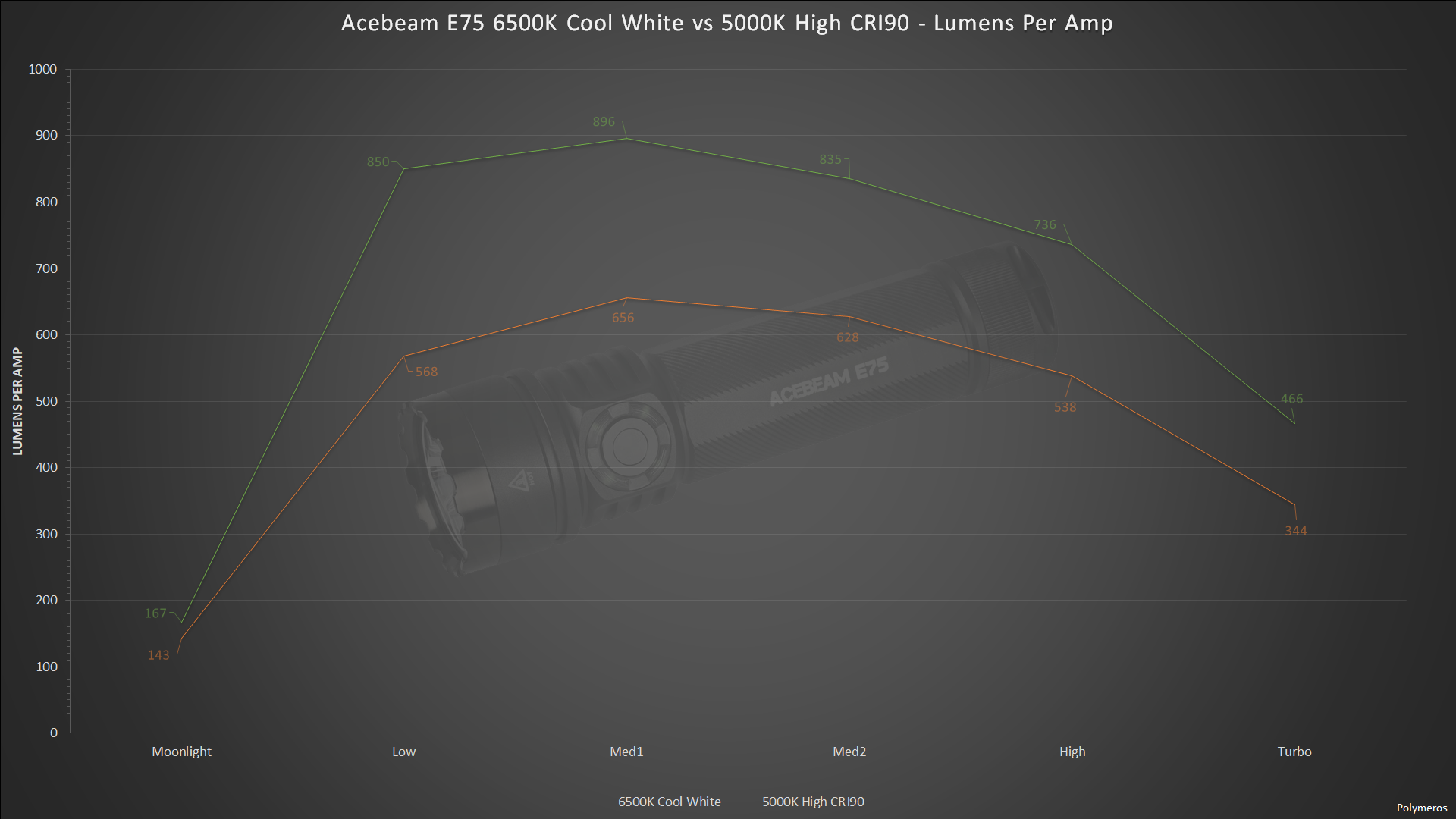
Battery and Charging
The Acebeam E75 comes with a standard, protected, button top, 21700 Li-Ion battery which is rated at a capacity of 5000mAh and a maximum output current of 15A. As the torch features springs on both ends of the battery, I tried using a flat top, unprotected battery, which is the shortest version of a 21700, but even though the torch turned on fine, there was some rattling when shaking the torch and some vigorous shaking turned the torch off. So, even though the battery is not proprietary and any battery can be used, it needs to be of a certain length.
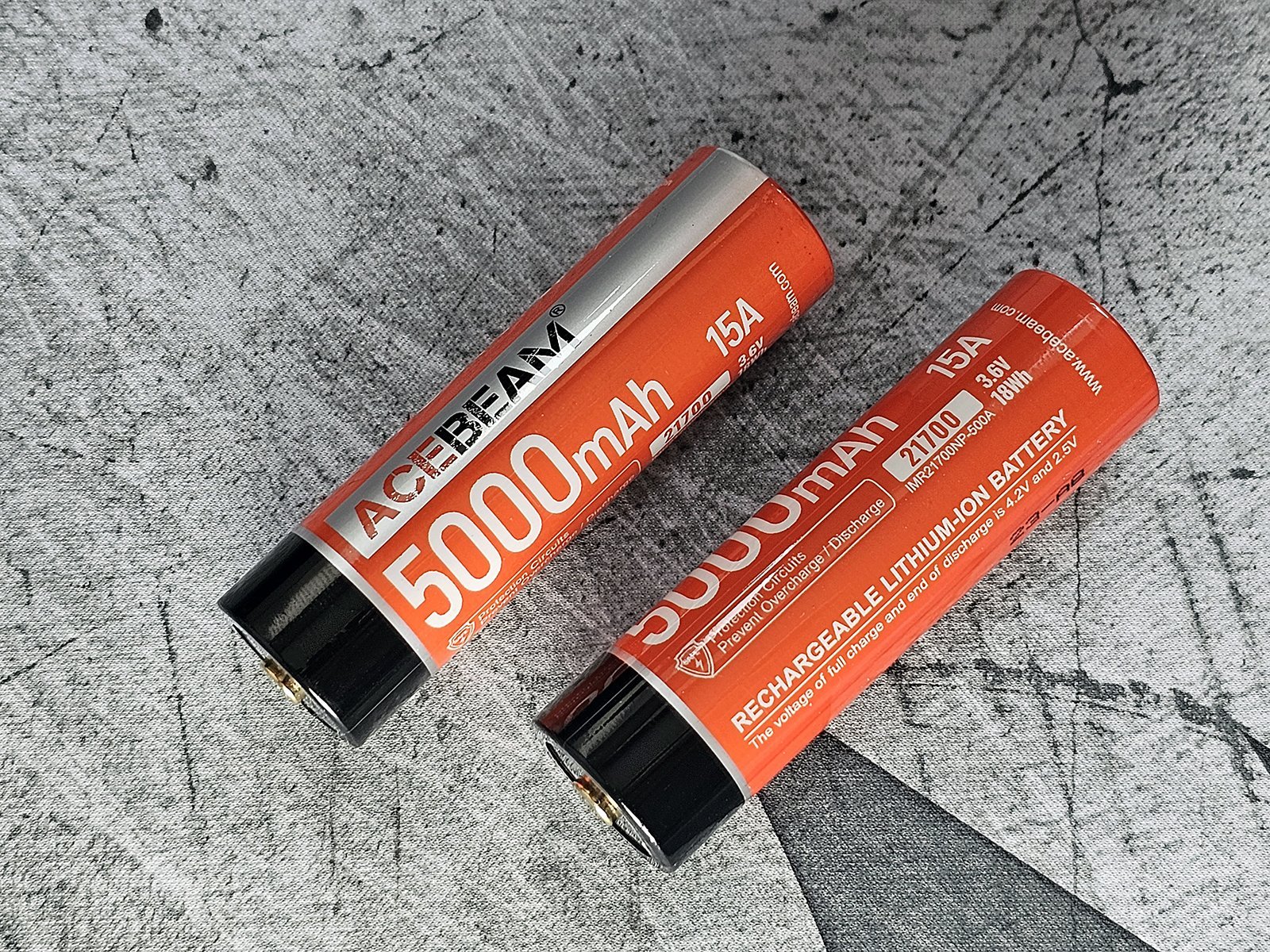
I measured both batteries that came with my samples and found the one that came in the black torch to have a capacity of 5051mAh and an internal resistance of 28mΩ and the one that came in the teal torch to have a capacity of 4987mAh and and an internal resistance of 32mΩ. These seem to be high quality batteries.

The charging of the Acebeam E75 is quite simple. Just lift the rubber flap and connect the included USB A to USB C charging cable, or any USB A to USB C or USB C to USB C cable.
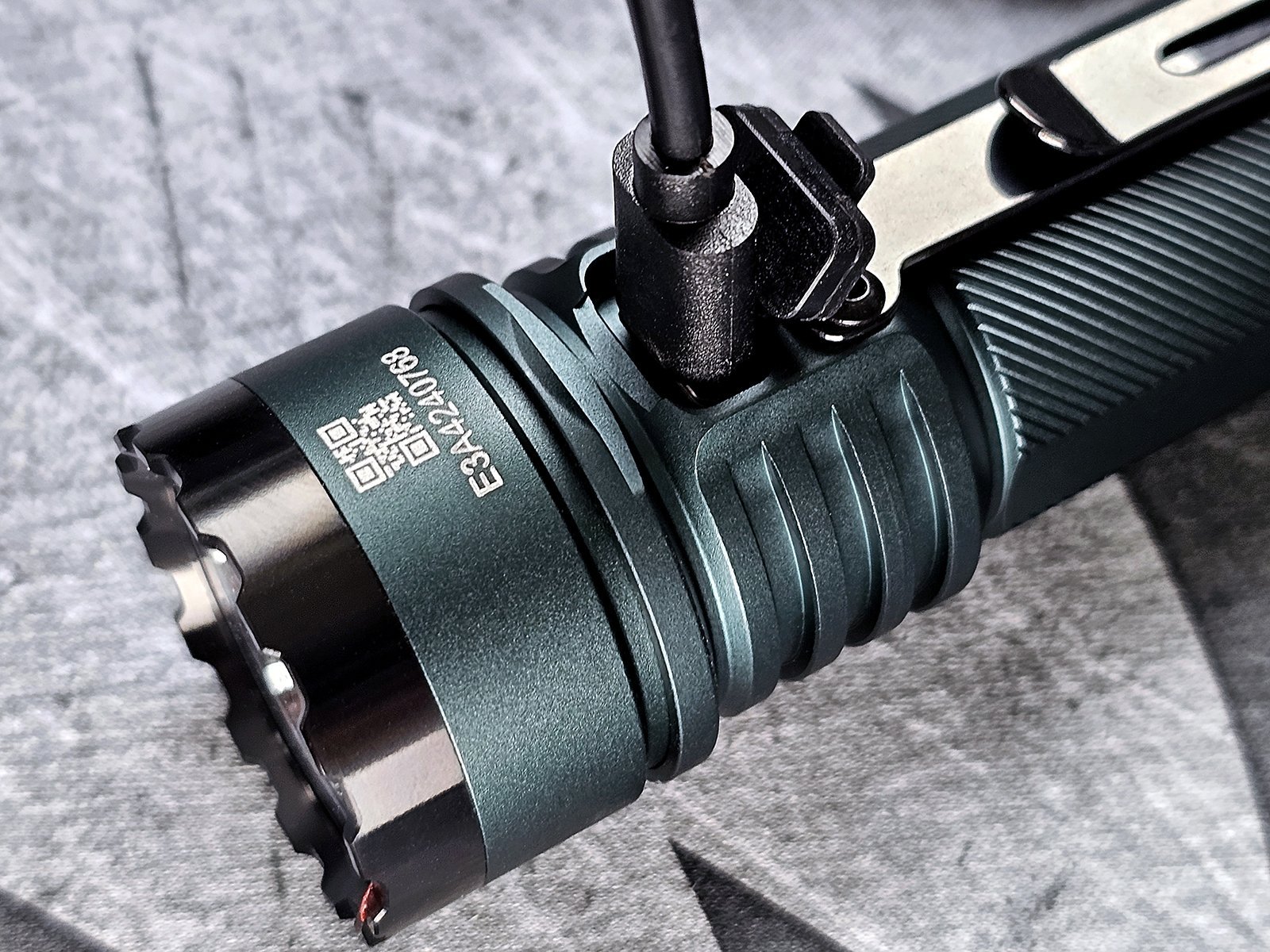
The indicator LEDs will start flashing red while charging and stay lit green when the battery is fully charged.

The following chart shows the charging of the battery inside the Acebeam E75, after it had been depleted to the point where the torch turned itself off. At that point, I let the battery rest and then measured it at 2.85V. The charging used a maximum current of 1.603949A and was completed at a total charging time of 3 hours, 39 minutes and 39 seconds. This charging process used a total of 21.4618Wh. The voltage of the battery at the end of charging was 4.15V.

Runtime Charts
Let's go over some runtime charts for both the Cool White and the High CRI emitter options of the Acebeam E75.
The first chart shows the full runtime of the Cool White emitter option, on Turbo. All the details are noted on the chart.

Here are the first 10 minutes of the above chart, in greater detail.
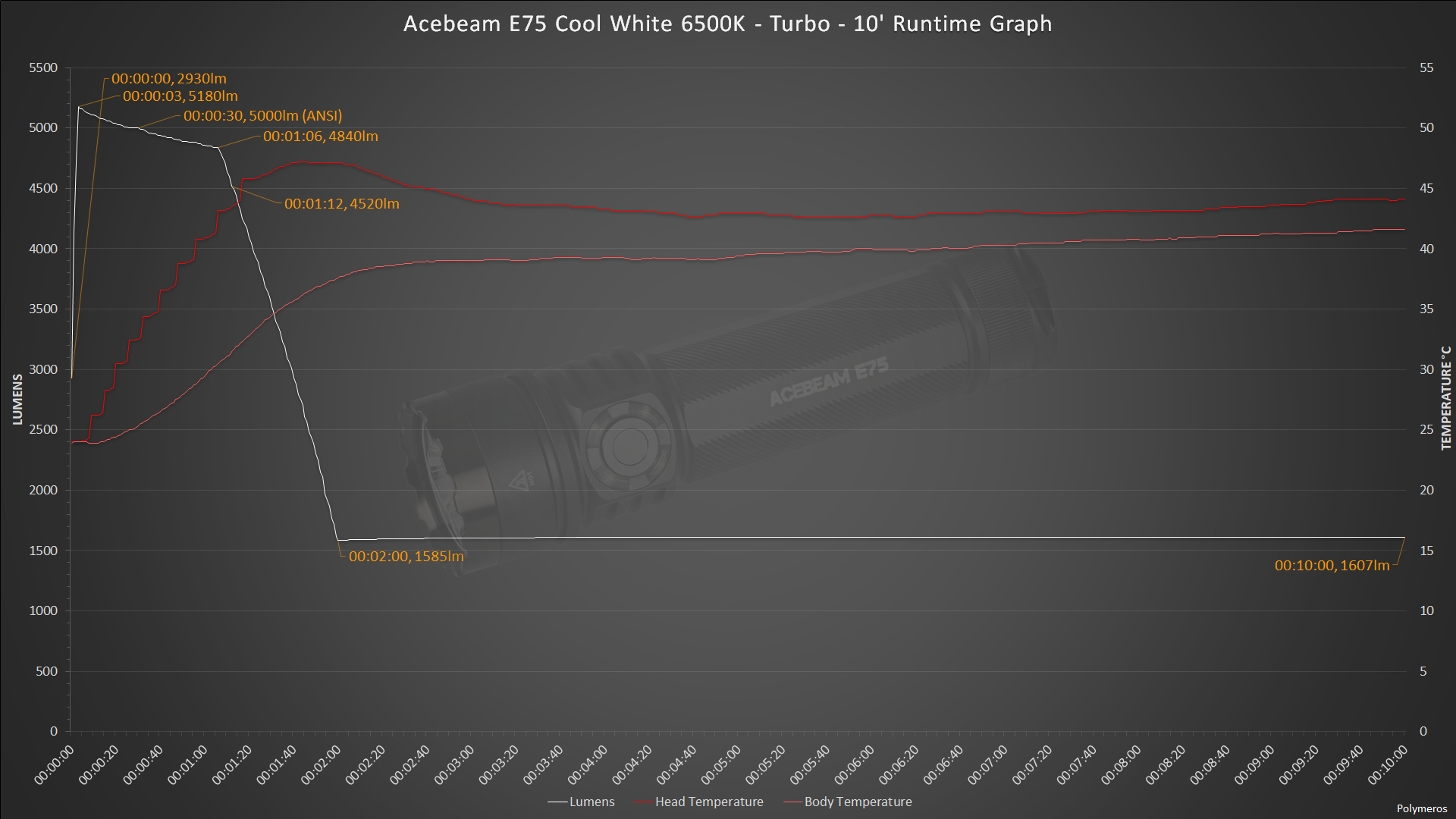
This is the High CRI emitter option, also on Turbo.
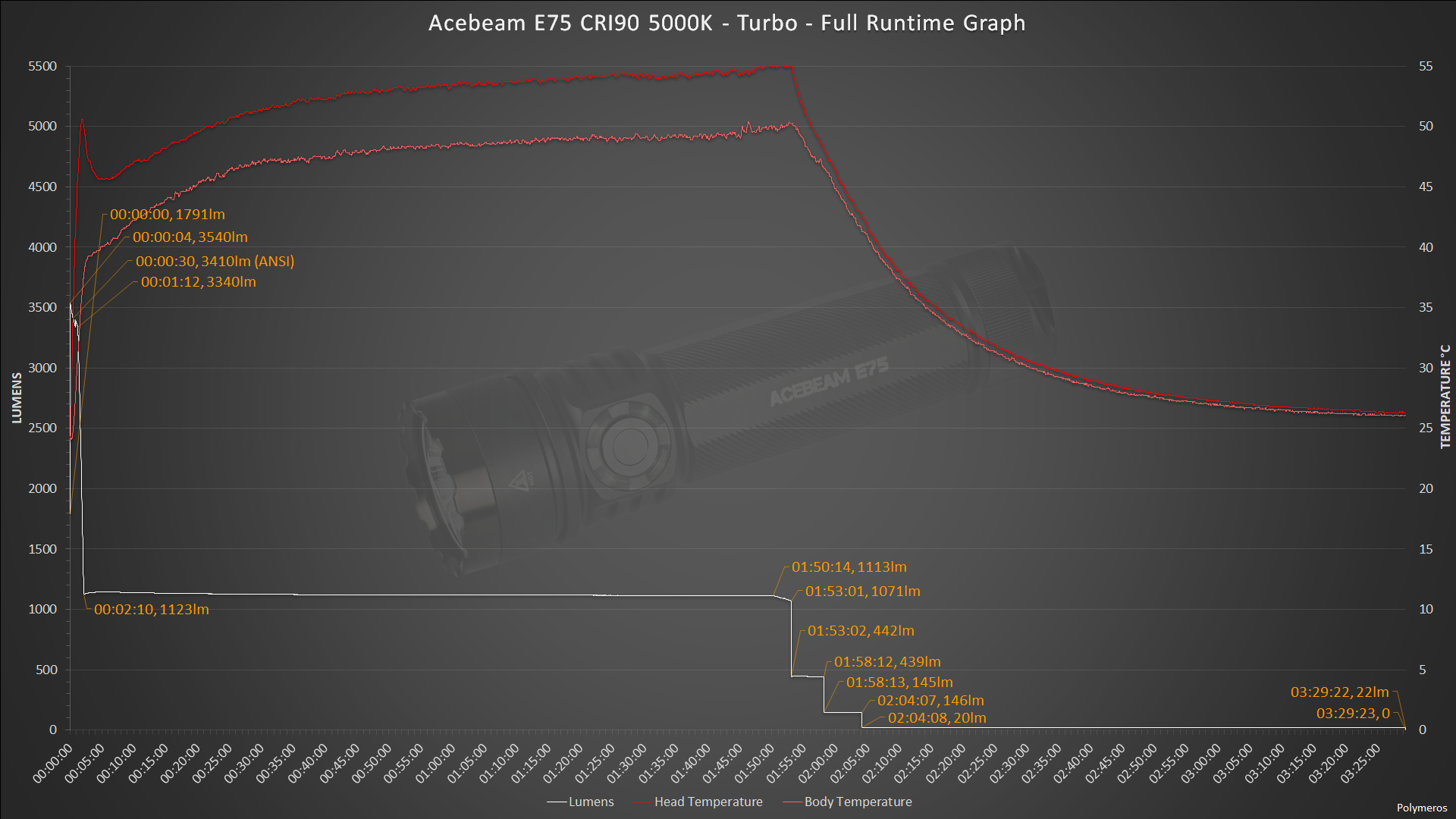
Here are the first 10 minutes of the above chart, in greater detail.

This is the Cool White emitter option full runtime chart, on High.
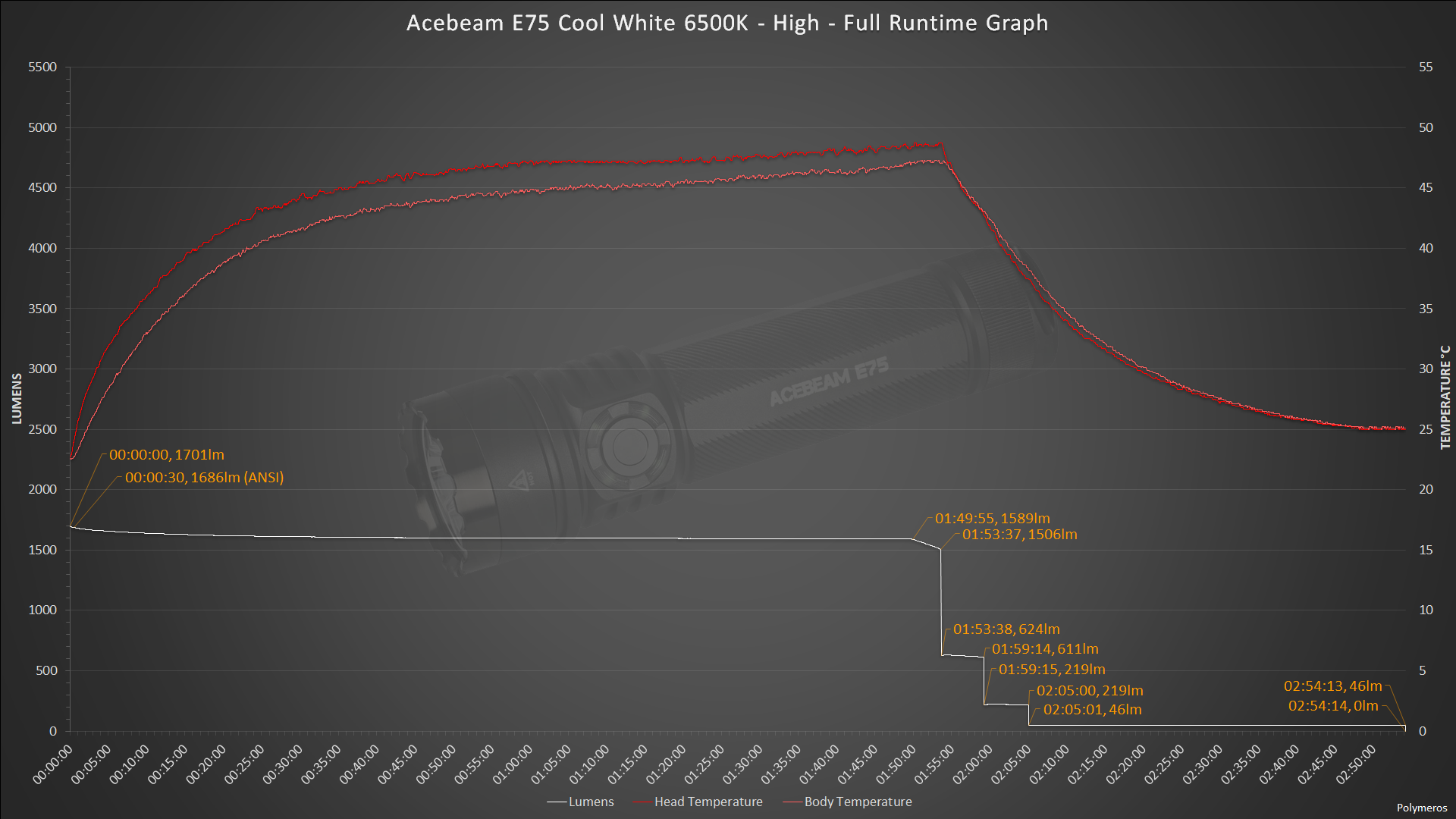
Here are the first 10 minutes of the above chart, in greater detail.
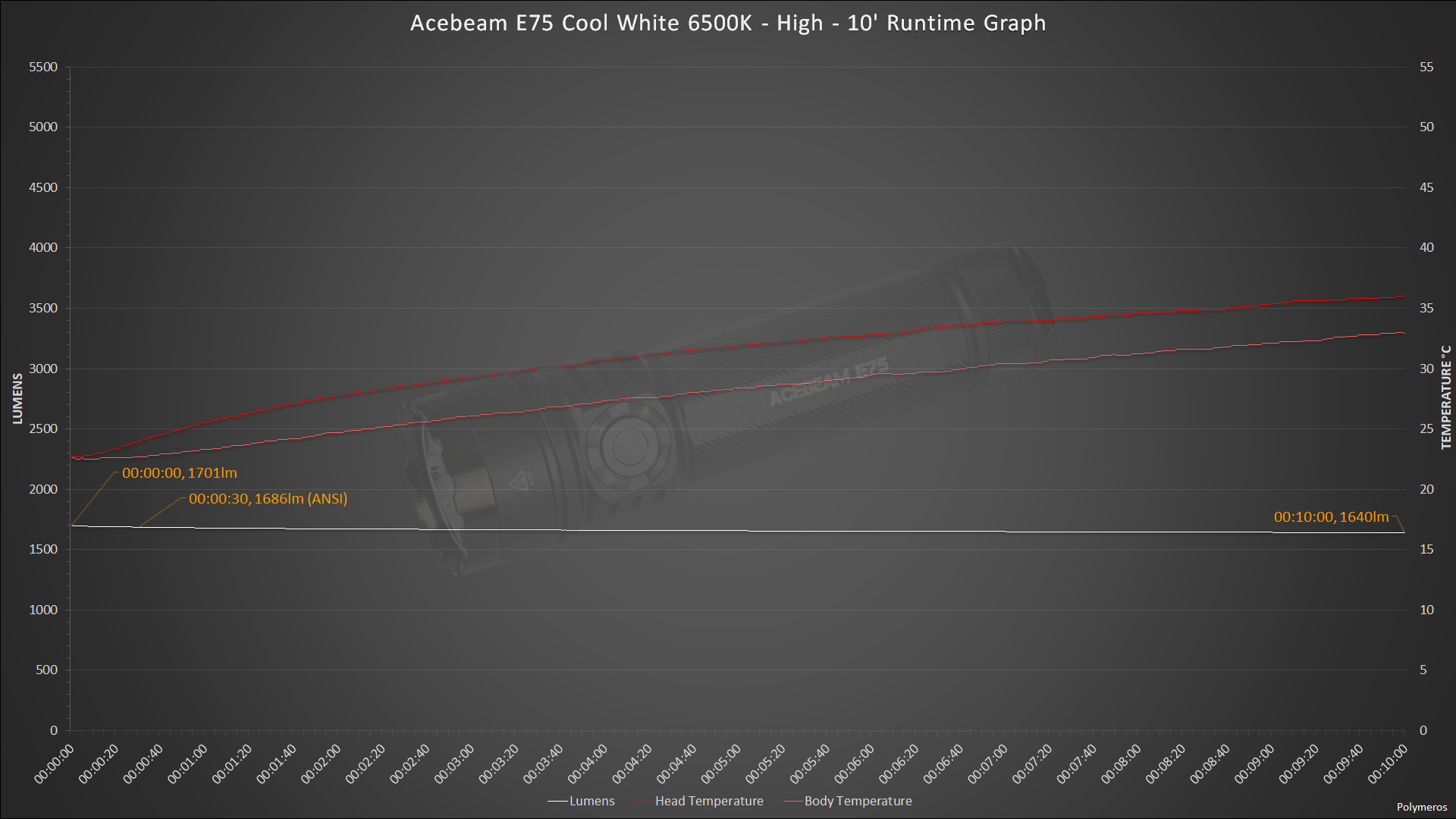
This is the High CRI emitter option full runtime chart, on High.
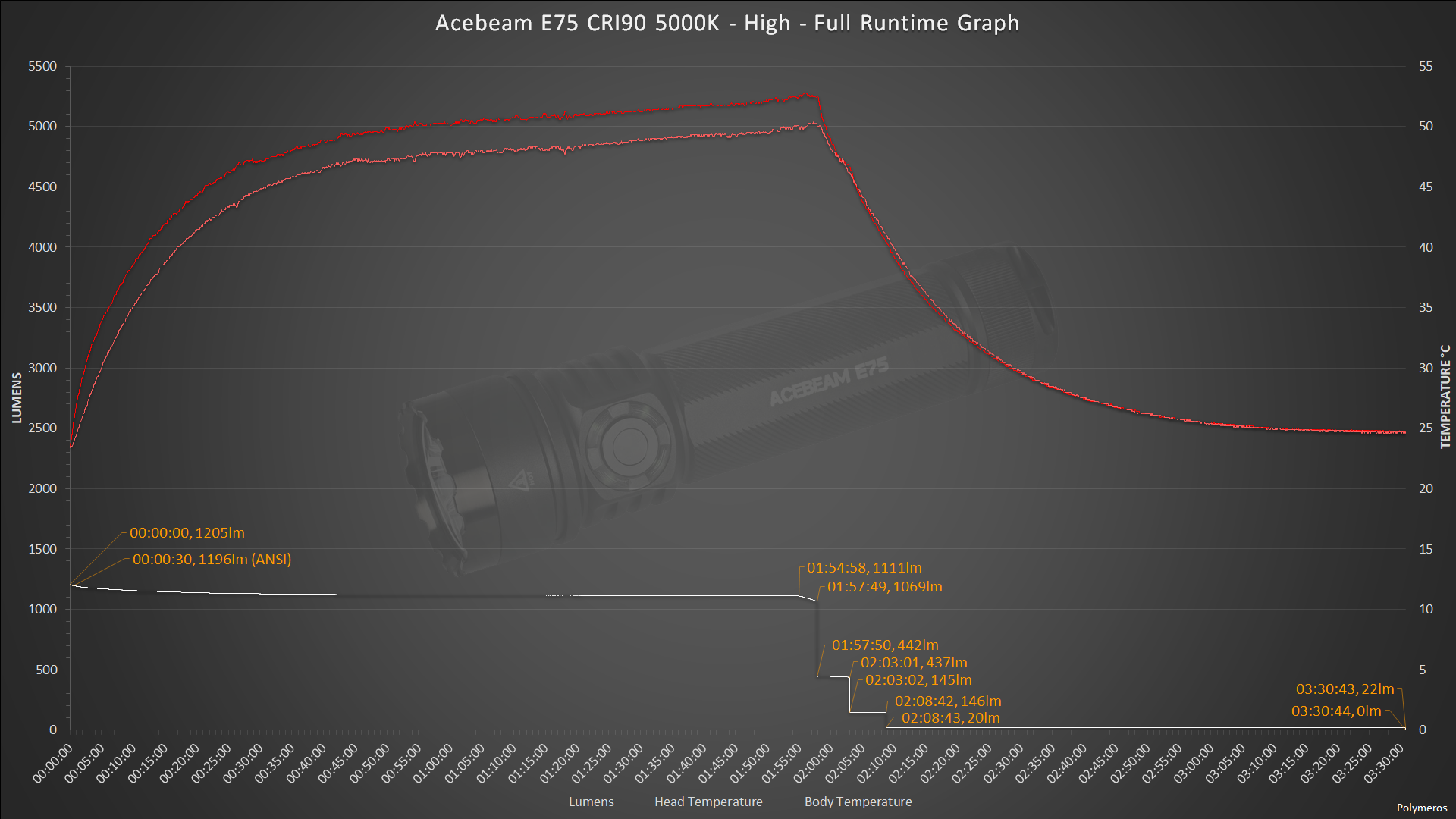
Here are the first 10 minutes of the above chart, in greater detail.
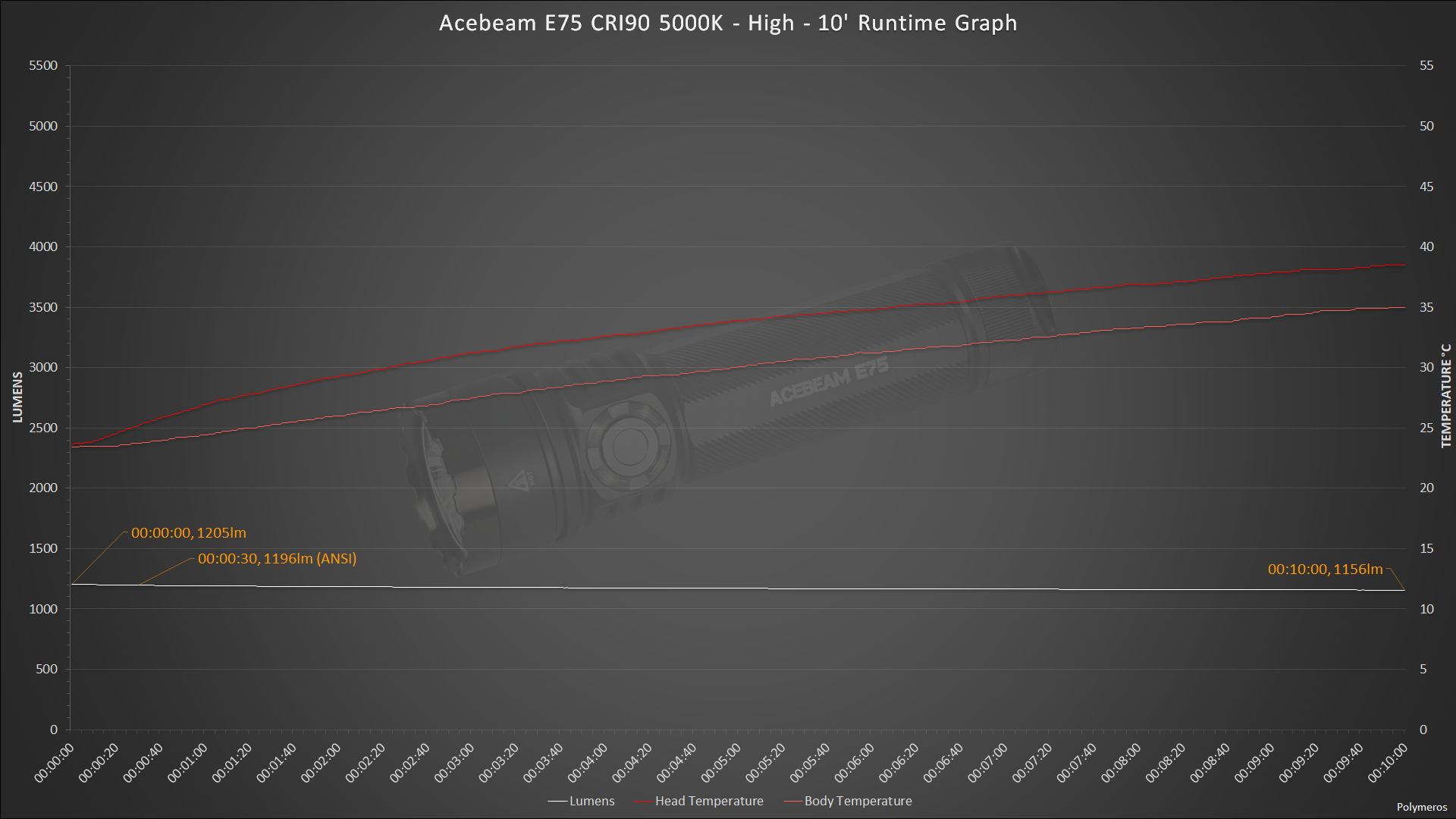
The following chart summarizes all of the above, in 1 chart. Temperatures are omitted, to keep it clean. You can see that the Cool White has higher output, as expected but the High CRI has slightly longer run times and, of course, higher quality light.

Here are the first 10 minutes of the above chart, in greater detail.
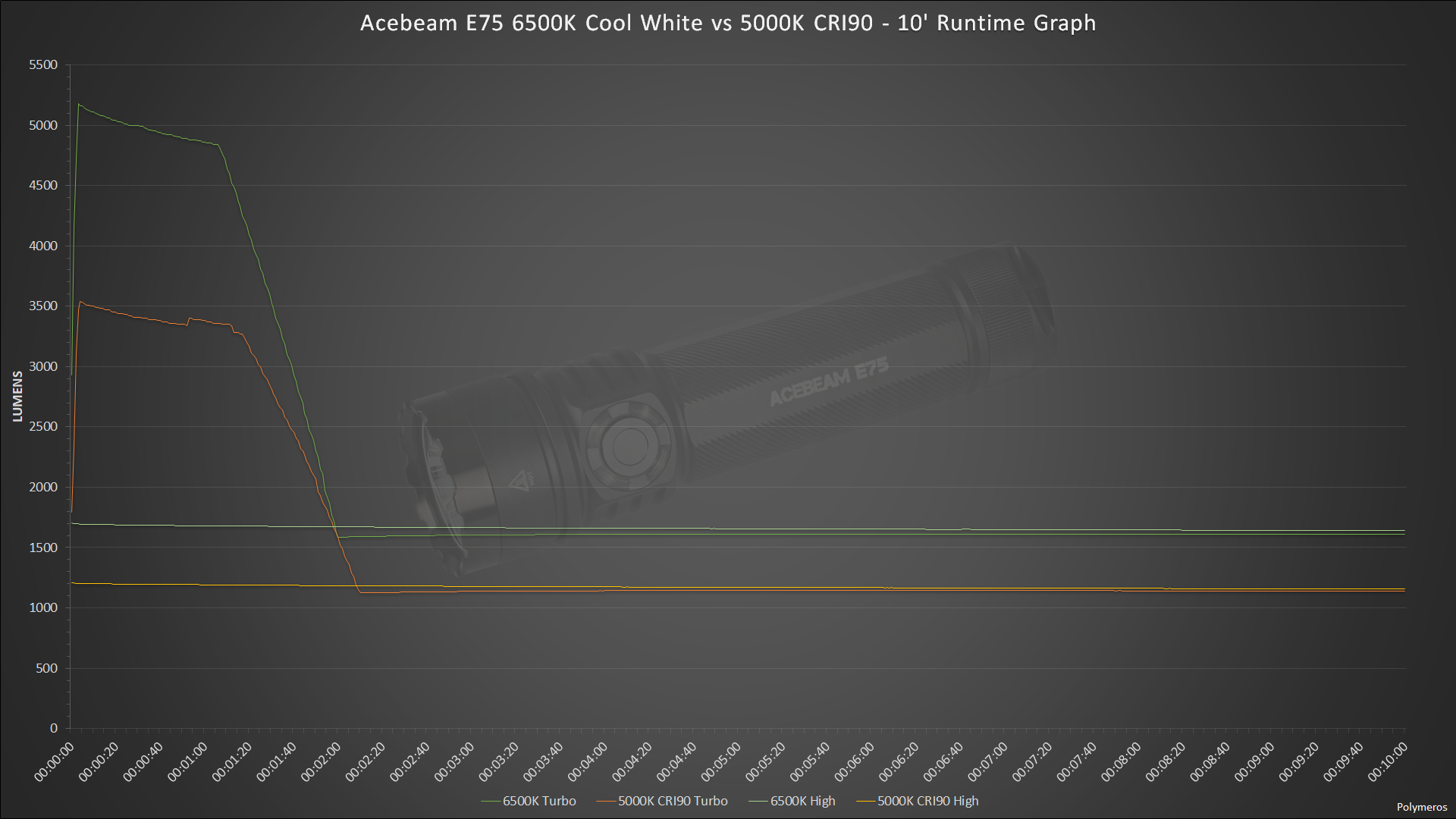
Conclusion
The Acebeam E75 is a quad emitter torch powered by a 21700 Li-Ion battery. It comes in 4 anodization colour options - black, grey, green and teal. It also comes with 2 emitter options: Cool White, which is in fact Osram P9 6500K and High CRI which is Nichia 519a 5000K CRI90. This means that there are a total of 8 different configurations for the buyer to choose from.
The build quality and anodization are, as expected from Acebeam, excellent and the user interface is intuitive, simple and functional.
The 2 emitter options allow the buyer to choose between high output and high quality of light.
The output I measured on the Cool White version exceeds the specifications significantly and makes the Acebeam E75 one of the brightest, if not the brightest (it is definitely the brightest among the ones I have tested) torches of this configuration and size. The throw measurements were below specifications but still quite respectable for this inherently floody form factor.
The High CRI version also measured above its specifications in output and offers a great combination of high output and high CRI, measured above 95 on all modes. The throw was according to specifications on the High CRI version.
The choice of a reflector and glass lens instead of a plastic TIR offer robustness and longevity. There is no worrying about scratches or, even worse, contamination on the TIR that would catch on fire.
The driver is a high efficiency, constant current, boost driver that offers stable outputs and high run times. It includes over charging protection, over current protection, low voltage protection and thermal regulation.
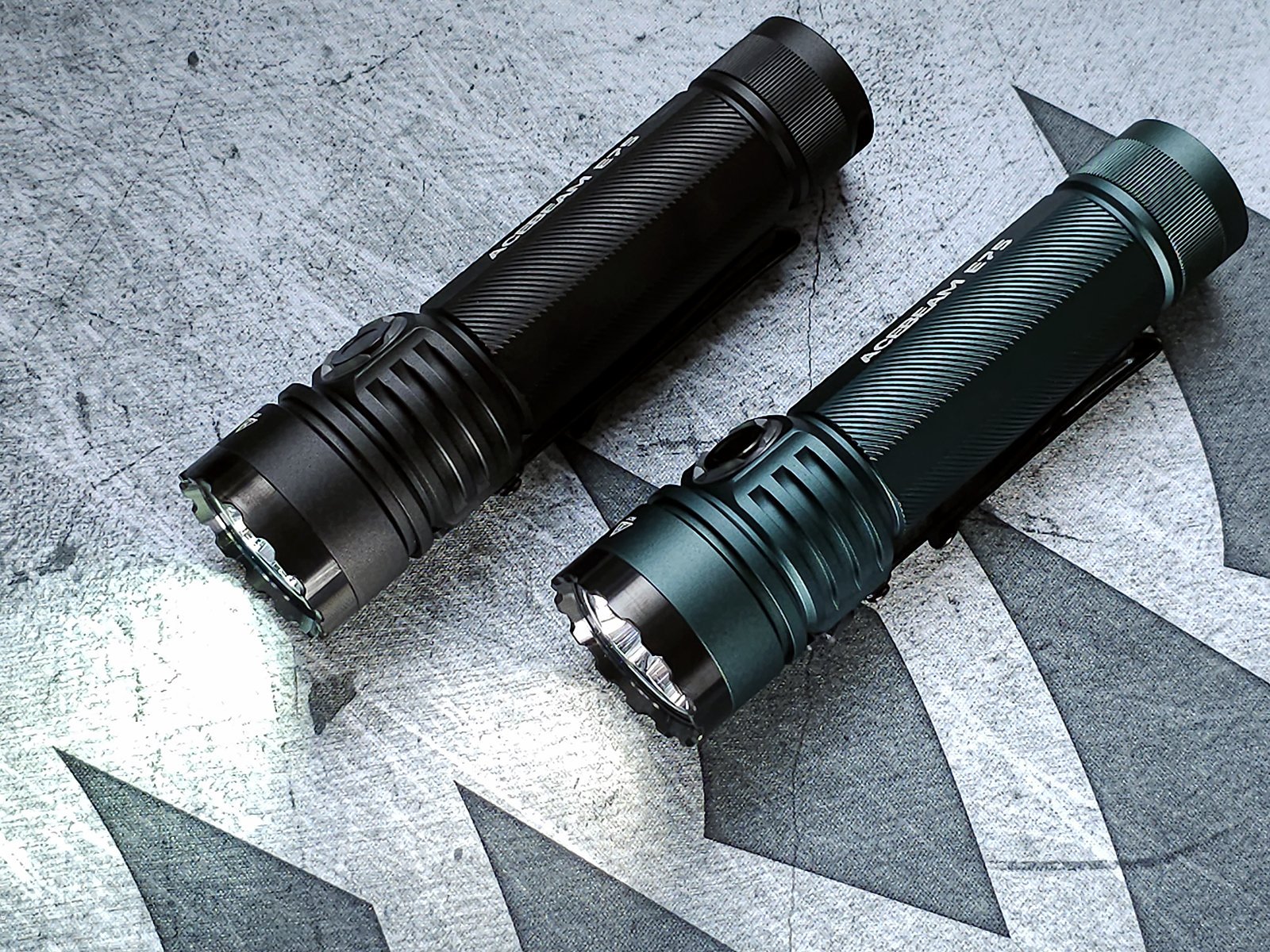
The only important negative I could find is the poorly designed indicator LEDs which will only let you know that your battery is getting low when it reaches 20%. There are much better options such as each of the 4 indicator LEDs representing 25% of the total capacity or even small OLED screens with even more precise information.
You can purchase any of the 8 versions of the Acebeam E75 from their website for $99, and that includes the battery, which is a good price for the features it offers.
If you are in the UK like me and would prefer to avoid the hustle and possible import charges of ordering from abroad, you can get it from Amazon.co.uk for a price that, at the time of writing this review, varies between £99.99 and £127.78, depending on the variant. It is definitely worth checking before ordering.
If you order from Acebeam's website, don't neglect to grab the traffic wands. They are good quality silicone wands that sell for just $1.90 each of $3.50 for both.
Let's list the Pros and Cons of the Acebeam E75:

Pros
+ High Lumen output and High CRI options.
+ 4 anodization colours.
+ Output levels exceed specifications and are the highest I have tested in this type of torch.
+ Digitally regulated, constant current boost driver which provides stable output and high efficiency with no visible PWM.
+ Excellent fit and finish.
+ USB type C charging. The charging port recess fits all USB C cables.
+ Overcharging protection, Overcurrent protection, Low Voltage protection and Thermal Regulation.
+ Simple and intuitive User Interface.
+ Replacement charging port cover and 2 replacement O-Rings included.
+ Strong magnet in the tail cap.
+ Springs on both ends of the battery.
+ Works with any protected button top 21700 Li-Ion battery that can provide at least 12A or any 21700 Li-Ion battery that is long enough to not rattle.
+ Double sided clip, held by screws.
+ IP68.
+ Optional high quality silicone traffic wands at low cost.

Cons
- Poor battery level indicator.
- Candela / throw below specifications on the Cool White emitter version.
- Unprotected flat top 21700 batteries will work but rattle and the torch will turn off if bumped.
- I would like to see a holster included or even offered as an optional accessory to keep the torch free from scratches when in a backpack.
Thanks to Acebeam for providing the samples for review
Polymeros Achaniotis 2/10/2023
-
 9
9

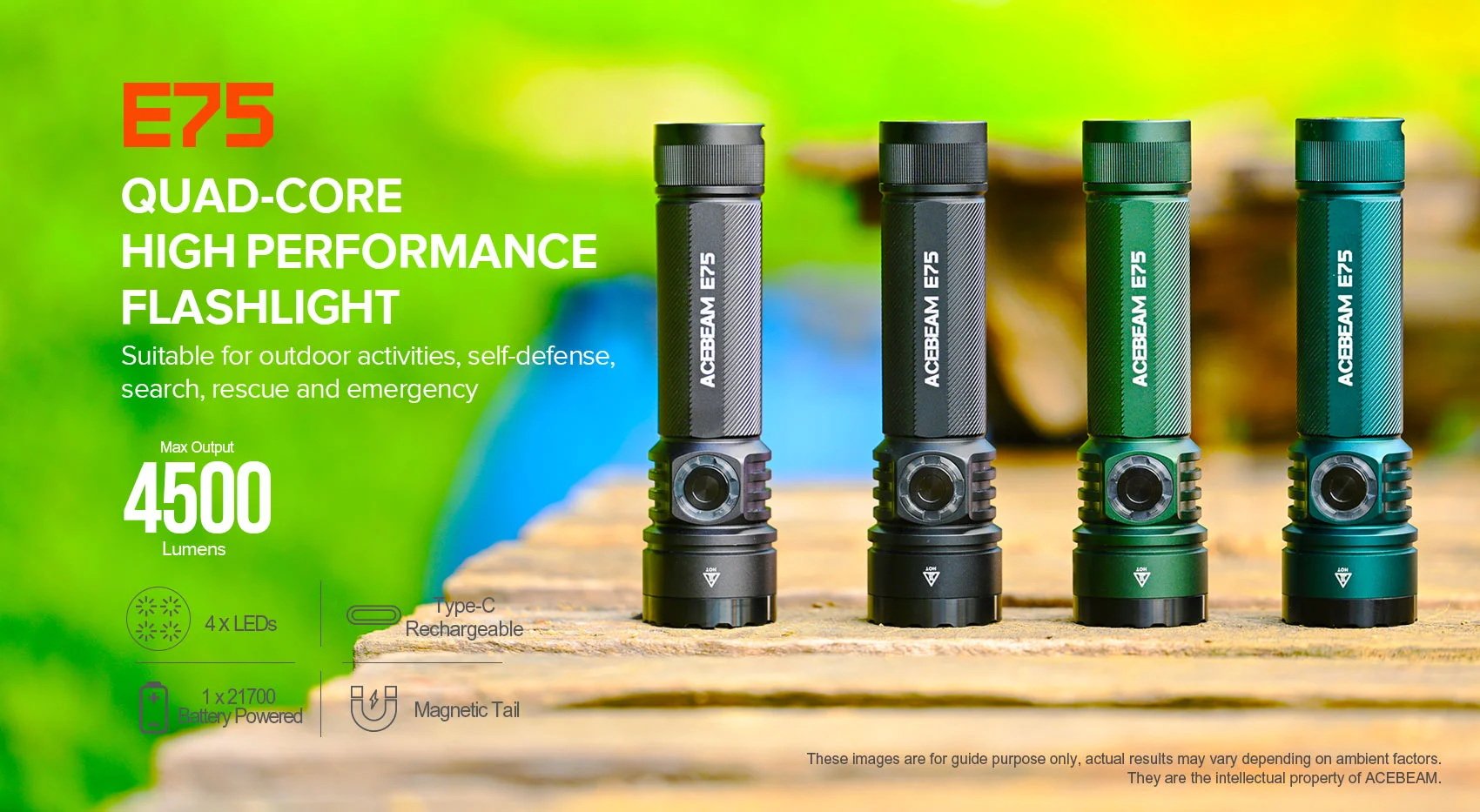








Recommended Comments
Create an account or sign in to comment
You need to be a member in order to leave a comment
Create an account
Sign up for a new account in our community. It's easy!
Register a new accountSign in
Already have an account? Sign in here.
Sign In Now